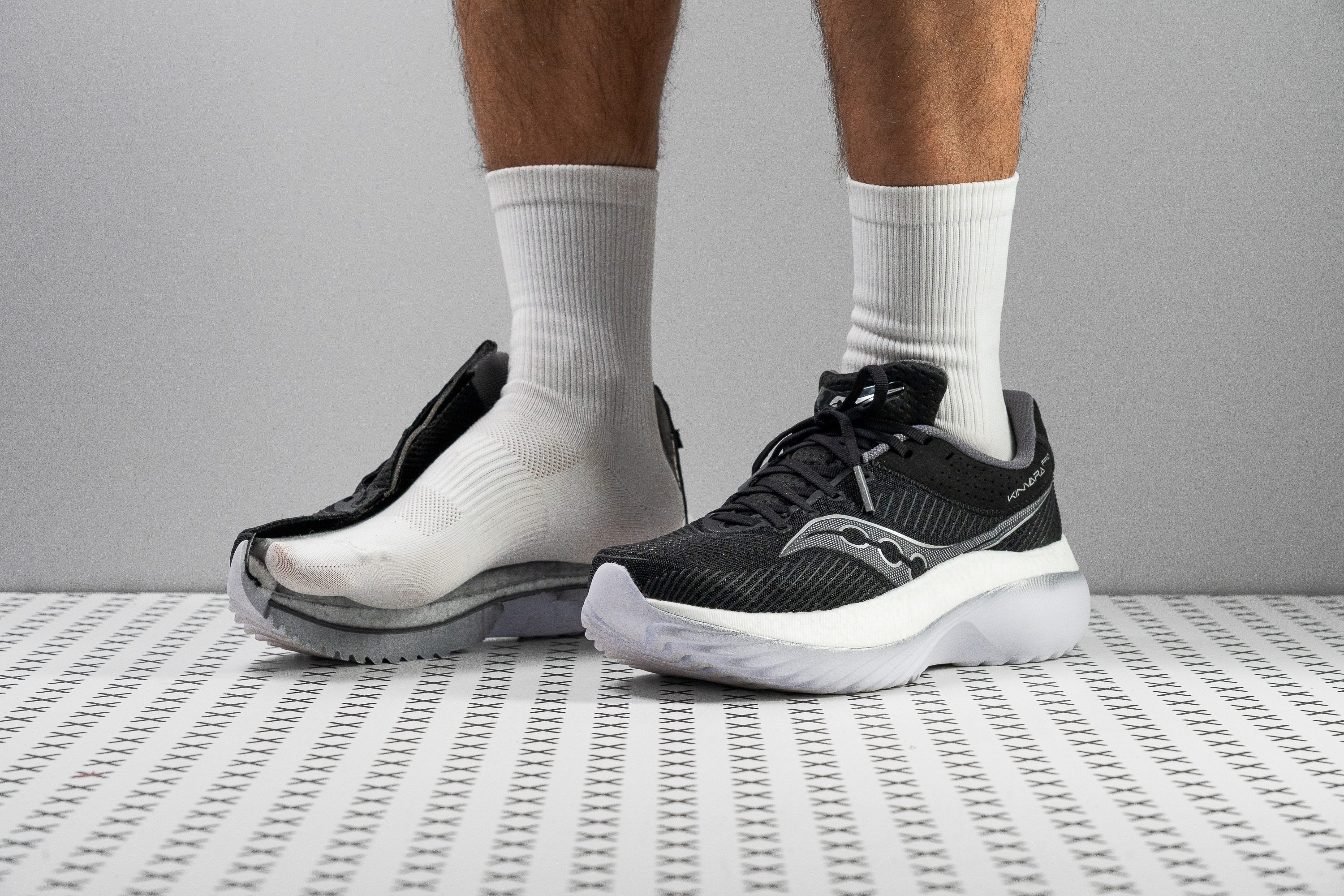Nuestra conclusión
Pros
- Muy amortiguadas para distancias largas
- Muy estables
- Ideales para los talonadores
- Diseñadas para durar
- Plantilla PWRRUN+ cómoda
- Geniales para cuando hace frío
- Detalles reflectantes para correr con poca luz
- Capa superior PWRRUN PB
- Buen agarre
Contras
- Parte delantera estrecha
- Menos transpirables que la media
- No sun unas Kinvara de verdad...
- ¡No son unas Kinvara!
Veredicto de los usuarios
- Top 23% entre Zapatillas de running para asfalto
- Top 23% entre zapatillas de running neutras
Comparativa
Las zapatillas de running más parecidas
+ + Añadir unas zapatillas | |||||
|---|---|---|---|---|---|
| Puntuación global | 89 Notables | 88 Notables | 92 Excelentes | 84 Buenas | |
| Precio | 220 € | 300 € | 170 € | 200 € | |
| Pace | Correr a diarioTempo / series | CompeticiónTempo / series | CompeticiónTempo / series | Correr a diario | |
| Arch support | Neutral | Neutral | Neutral | Neutral | |
| Peso laboratorio Peso marca | 9.9 oz / 281g 9.5 oz / 269g | 10.8 oz / 305g 10.8 oz / 306g | 8.7 oz / 248g 8.6 oz / 244g | 9.7 oz / 274g 8.8 oz / 250g | |
| Lightweight | ✗ | ✗ | ✓ | ✗ | |
| Drop laboratorio Drop marca | 10.3 mm 8.0 mm | 8.8 mm 6.5 mm | 9.6 mm 8.0 mm | 9.4 mm 5.0 mm | |
| Técnica de carrera | Talón | TalónMedio/antepié | TalónMedio/antepié | TalónMedio/antepié | |
| Talla | Tallan bien | Tallan un poquito pequeño | Tallan bien | Tallan bien | |
| Rigidez de la mediasuela | Equilibrada | Equilibrada | Blanda | Equilibrada | |
| Diferencia de la rigidez de la mediasuela en frío | Pequeña | Pequeña | Pequeña | Pequeña | |
| Durabilidad de la parte delantera | Buena | Buena | Buena | Mala | |
| Durabilidad del acolchado del talón | Alta | Alta | Alta | Baja | |
| Durabilidad de la suela exterior | Buena | Buena | Buena | Buena | |
| Transpirabilidad | Baja | Media | Media | Alta | |
| Anchura / ajuste | Media | Media | Estrecha | Media | |
| Anchura de la parte delantera | Estrecha | Estrecha | Media | Media | |
| Flexibilidad | Rígida | Rígida | Rígida | Rígida | |
| Rigidez torsional | Rígidas | Rígidas | Rígidas | Rígidas | |
| Rigidez del contrafuerte del talón | Moderado | Flexible | Rígido | Rígido | |
| Placa | Placa de carbono | Placa de carbono | Placa de carbono | Placa de carbono | |
| Rocker | ✓ | ✓ | ✓ | ✓ | |
| Talón laboratorio Talón marca | 45.6 mm 42.0 mm | 45.7 mm 50.0 mm | 39.7 mm 40.0 mm | 40.2 mm 35.0 mm | |
| Antepié laboratorio Antepié marca | 35.3 mm 34.0 mm | 36.9 mm 43.5 mm | 30.1 mm 32.0 mm | 30.8 mm 30.0 mm | |
| Anchuras disponibles | EstándarAncho | Estándar | Estándar | EstándarAncho | |
| Orthotic friendly | ✓ | ✓ | ✓ | ✓ | |
| Estación | Todas las estaciones | Todas las estaciones | Todas las estaciones | VeranoTodas las estaciones | |
| Removable insole | ✓ | ✓ | ✓ | ✓ | |
| Clasificación | #79 Top 22% | #130 Top 36% | #18 Top 5% | #232 36% inferior | |
| Popularidad | #215 41% inferior | #52 Top 15% | #26 Top 8% | #246 33% inferior |
Who should buy
We think that the Saucony Kinvara Pro is a solid pick for:
- Runners who crave maximum underfoot cushioning and enjoy a firm, stable ride.
- Saucony fans looking for a supertrainer with a tall stack and a carbon plate.
- Heel strikers needing a joint-friendly long-distance trainer with that signature Speedroll geometry.
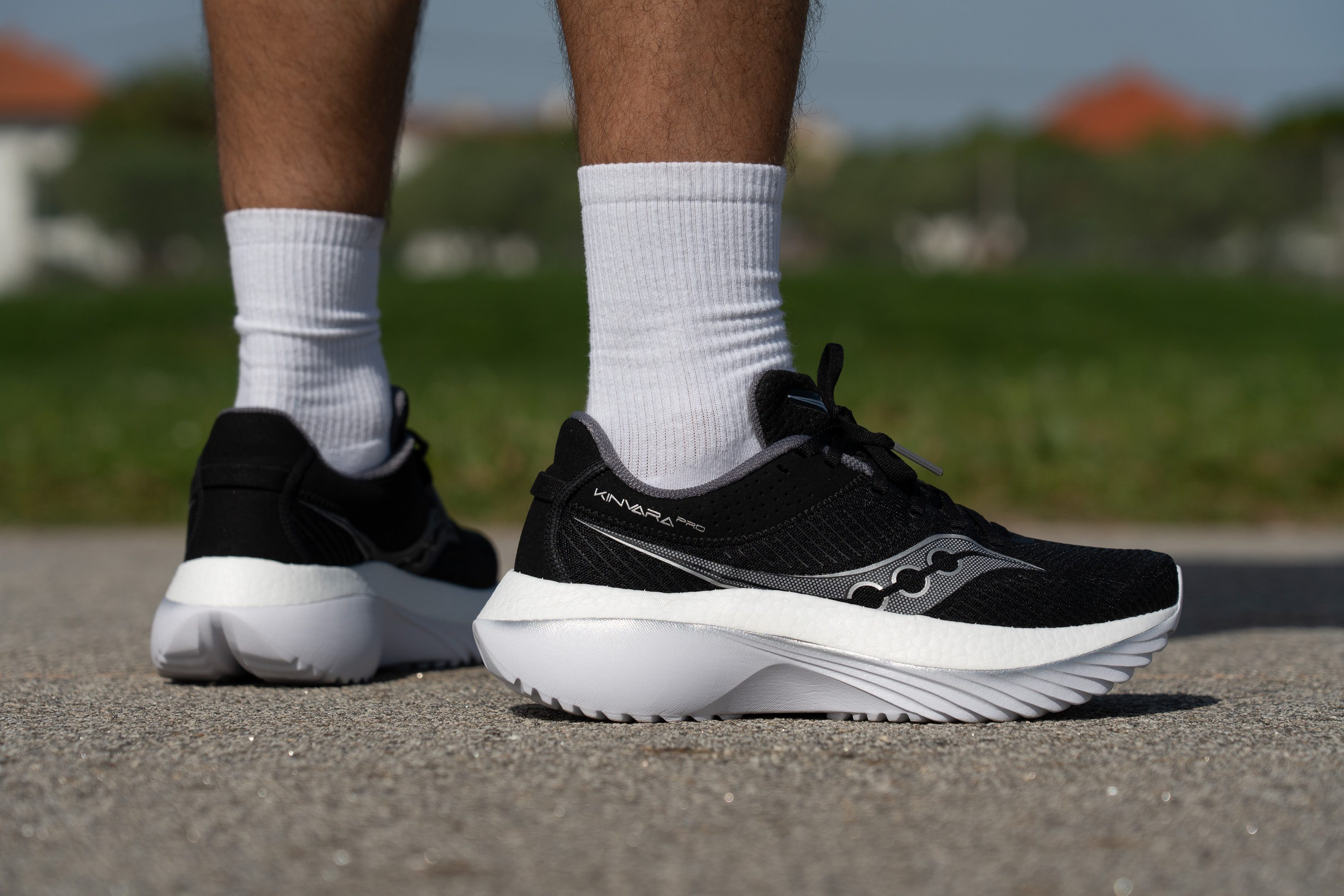
Who should NOT buy
The Kinvara Pro attempts to merge various concepts but falls short in key areas. We found the PWRRUN foam layer to be underwhelming, resulting in a sluggish ride compared to more responsive supertrainers like the Nike Zoom Fly 6 and ASICS Superblast 2.
Another major drawback is the cramped toebox. In our lab, we measured one of the lowest scores we've recorded. From our point of view, this makes the shoe unsuitable for most runners, especially for long sessions where foot swelling is normal. In contrast, the Adidas Adizero Boston 12 and On Cloudmonster Hyper offer similar specs but with much more foot-friendly uppers.
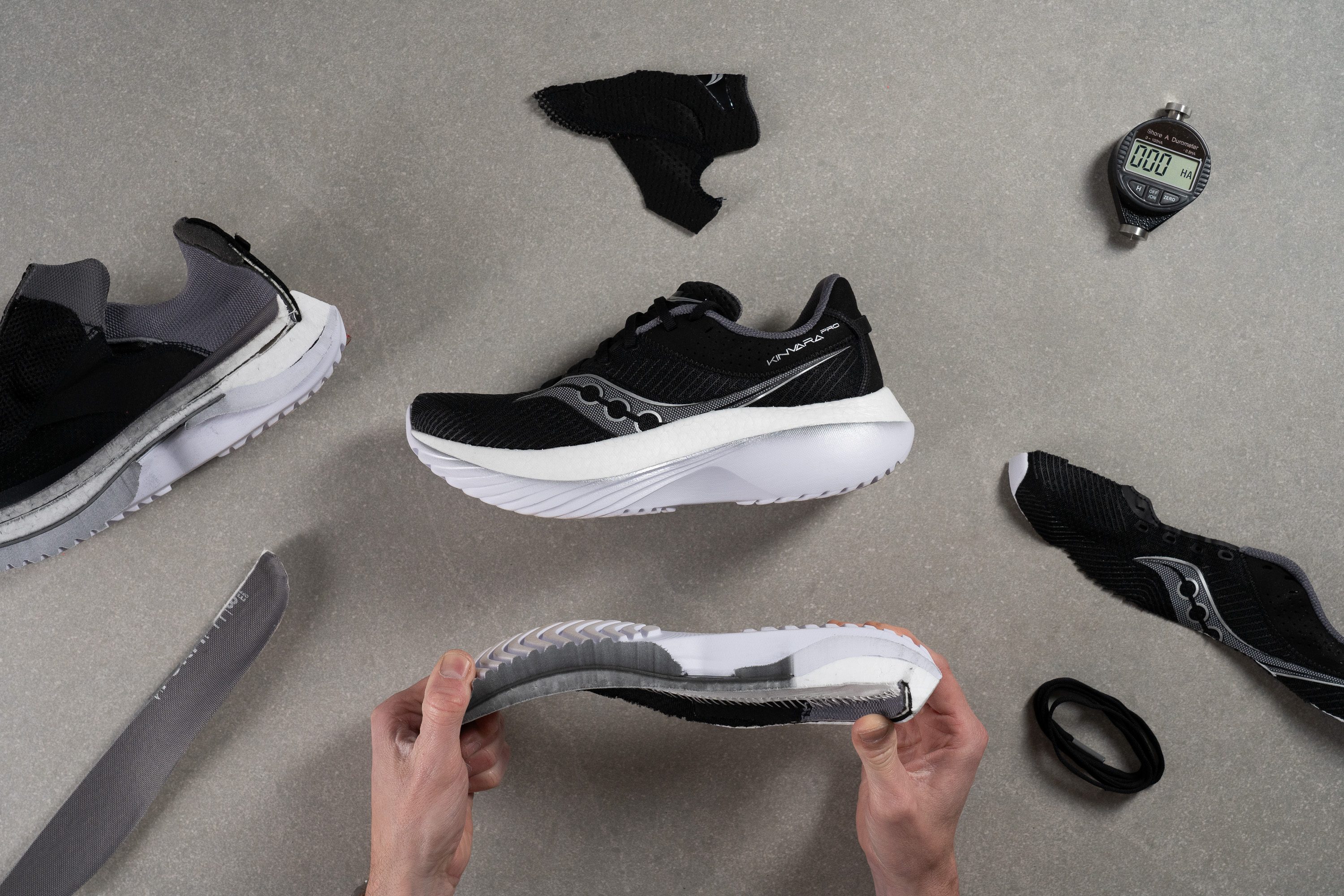
Price is also hard to justify. Shoes like the ASICS Novablast 5 or the Adidas Adizero EVO SL not only weigh less but also deliver better performance across the board, and both cost less. From our standpoint, there are simply smarter picks in today’s crowded supertrainer market.
Amortiguación
Shock absorption
Even though the shoe looks extra-bulky from every angle, its cushioning doesn’t quite match the visual expectations... especially in the heel. We recorded just 127 SA in our ASTM F1976 test, which caught us off guard.
The forefoot performed better with 115 SA, more in line with the shoe’s oversized vibe, but we think it might still underwhelm runners chasing max-protection comfort.
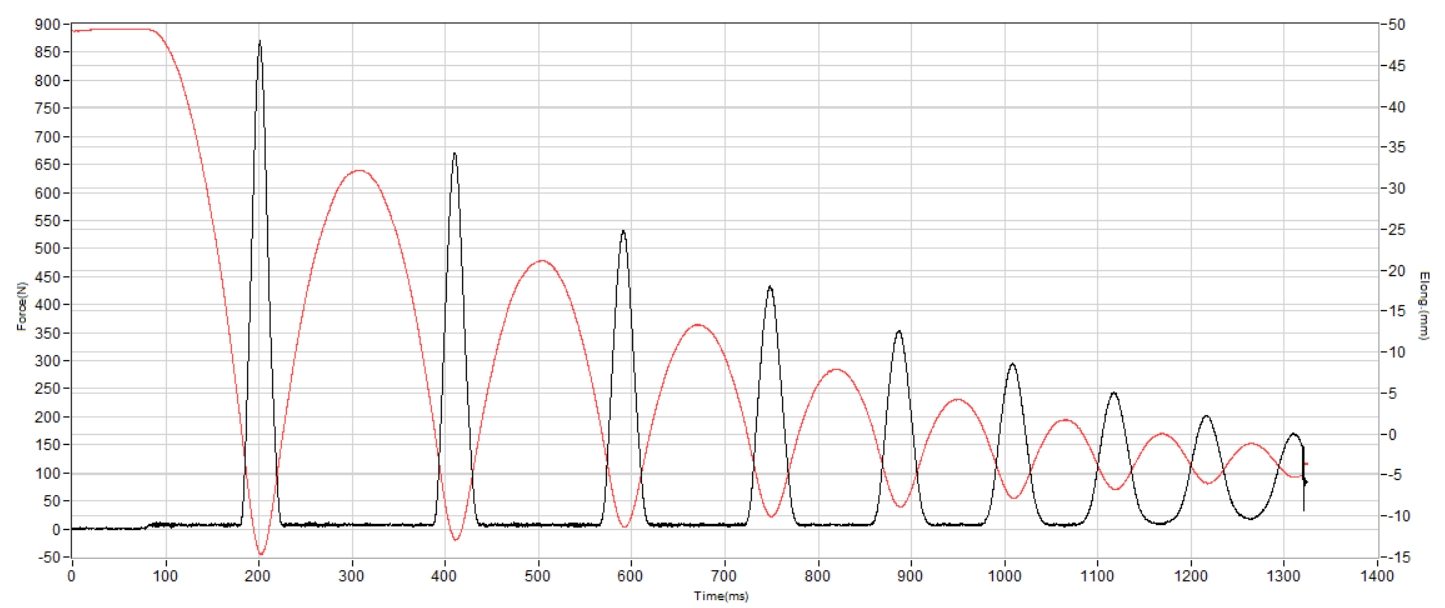
| Kinvara Pro | 127 SA |
| Media | 130 SA |
Energy return
The Pebax-based PWRRUN PB layer in the Kinvara Pro noticeably boosts its energy return, giving us a solid 65.9% in the heel. We also tested the forefoot, which hit 70.4% thanks to a higher share of this premium foam over standard PWRRUN.
| Kinvara Pro | 65.9% |
| Media | 58.6% |
Altura de la suela en la zona del talón
With 45.6 mm of stack height in the heel, the Kinvara Pro is a high-cushion juggernaut. We've tested hundreds of shoes in the lab, and only a few provide more foam in this area.
Is that too much? Probably—for the average runner. In fact, it’s nearly double the height of the Kinvara 15. Still, the Kinvara Pro fits perfectly within the max-stack supertrainer trend that's gaining serious momentum since the launch of the original ASICS Superblast, and that's why picking the "Kinvara" name for this shoe feels super weird!
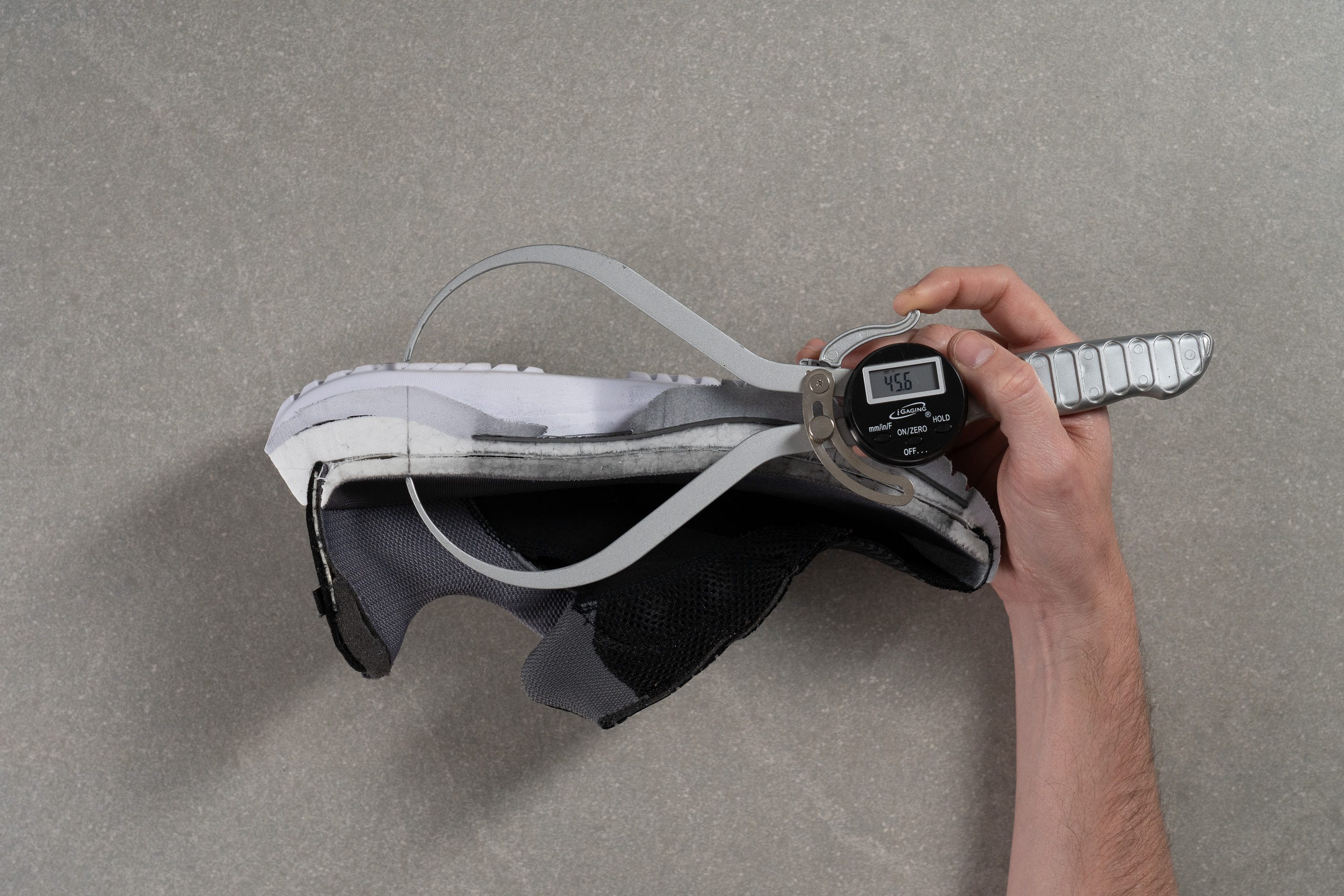
| Kinvara Pro | 45.6 mm |
| Media | 34.8 mm |
Altura de la suela en el antepié
As expected, the forefoot is impressively stacked at 35.3 mm. That means any connection to the ground is completely filtered. In other words—this shoe delivers a super-cushioned, zero-feedback ride from start to finish.
Thanks to this towering foam base, we think it’s a top choice for high-mileage training or for heavier runners seeking a protective ride for their joints.
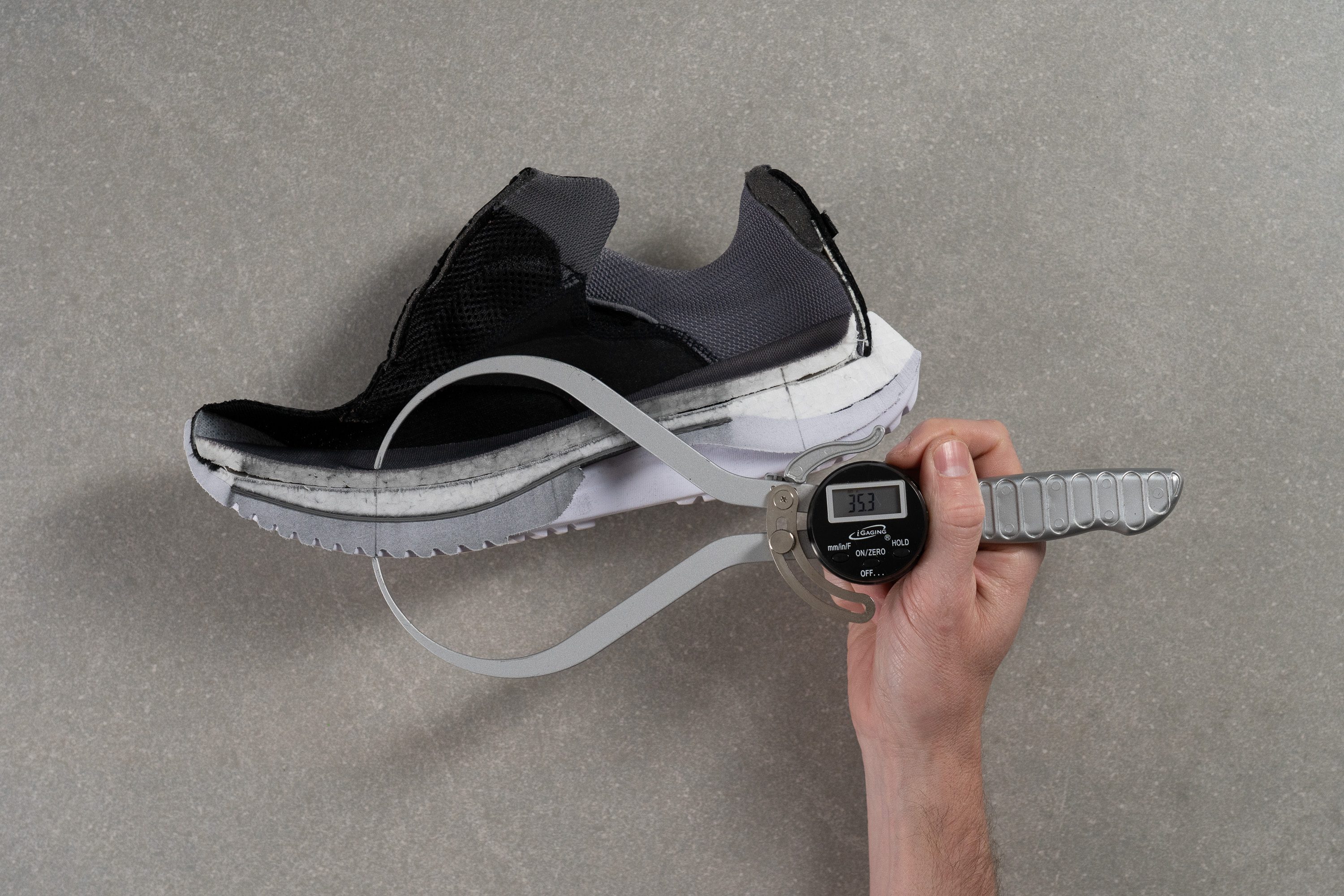
| Kinvara Pro | 35.3 mm |
| Media | 26.2 mm |
Drop
The actual heel-to-toe drop is slightly higher than Saucony’s stated 8 mm, measuring 10.3 mm at the official World Athletics points. Still, this minor shift subtly favors heel strikers without changing the overall ride too much.
But again, Kinvara fans expect a low heel-to-toe drop, and we don’t see why adding “Pro” to the name has to come bundled with a 10.3 mm offset, or viceversa.
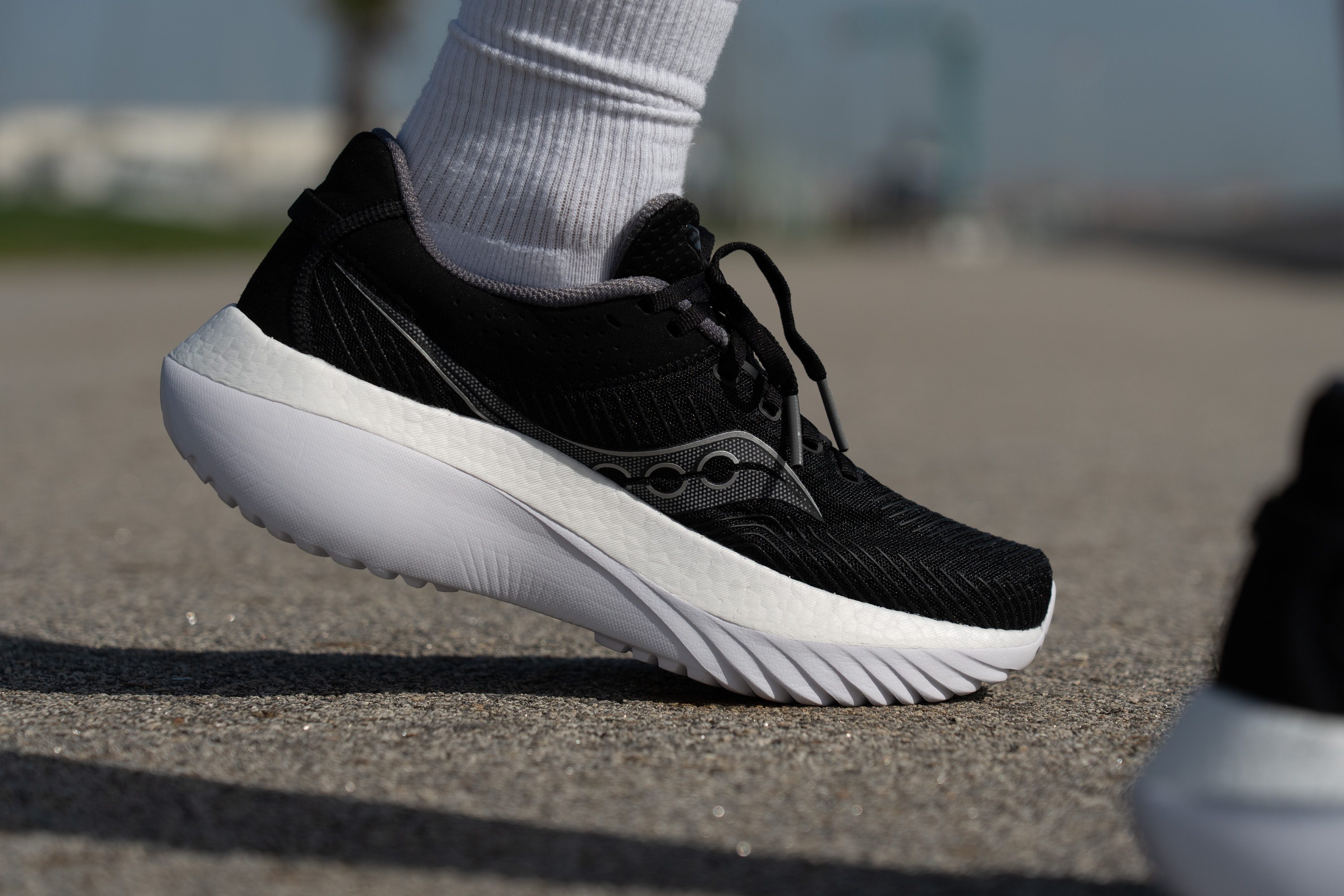
| Kinvara Pro | 10.3 mm |
| Media | 8.6 mm |
Suavidad de la mediasuela
The Kinvara Pro features a dual-foam setup that feels slightly off and chunky underfoot while running. However, let’s go deeper into the details.
The top layer is PWRRUN PB—the same responsive foam found in the fun-and-versatile Endorphin Speed 4. We measured it at 24.1 HA on our durometer, placing it in the moderately firm range. It's a quick-rebounding material that works nicely, though it’s worth noting that it’s only used in the top layer of the Kinvara Pro.
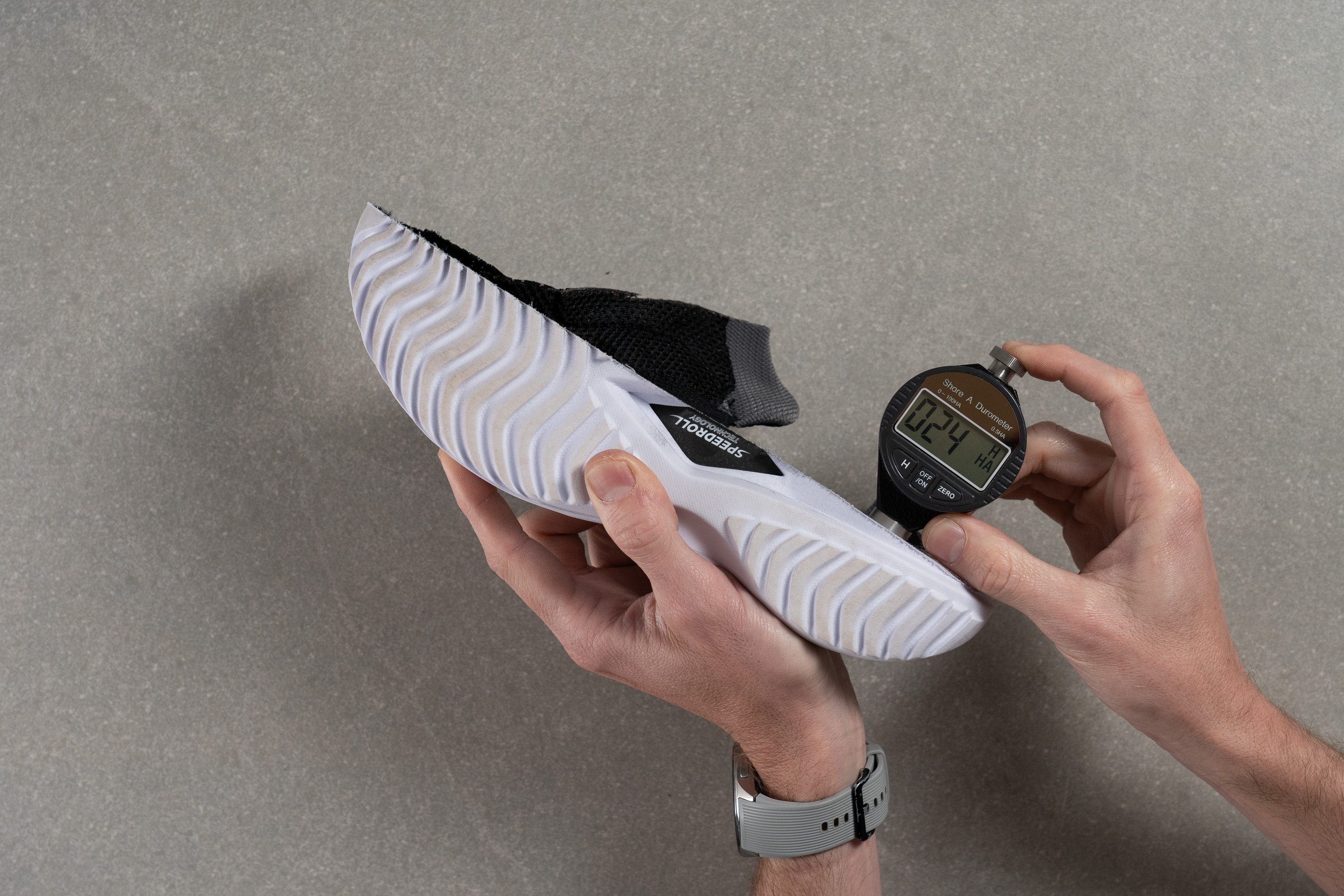
| Kinvara Pro | 24.1 HA |
| Media | 20.4 HA |
Suavidad de la espuma secundaria
The secondary layer runs from heel to toe beneath the plate, and it's made of PWRRUN. This is a firm, low-bounce EVA foam designed for extra stability and added durability—though at the expense of energy return and weight. We confirmed its firmness with a 29.5 HA reading.
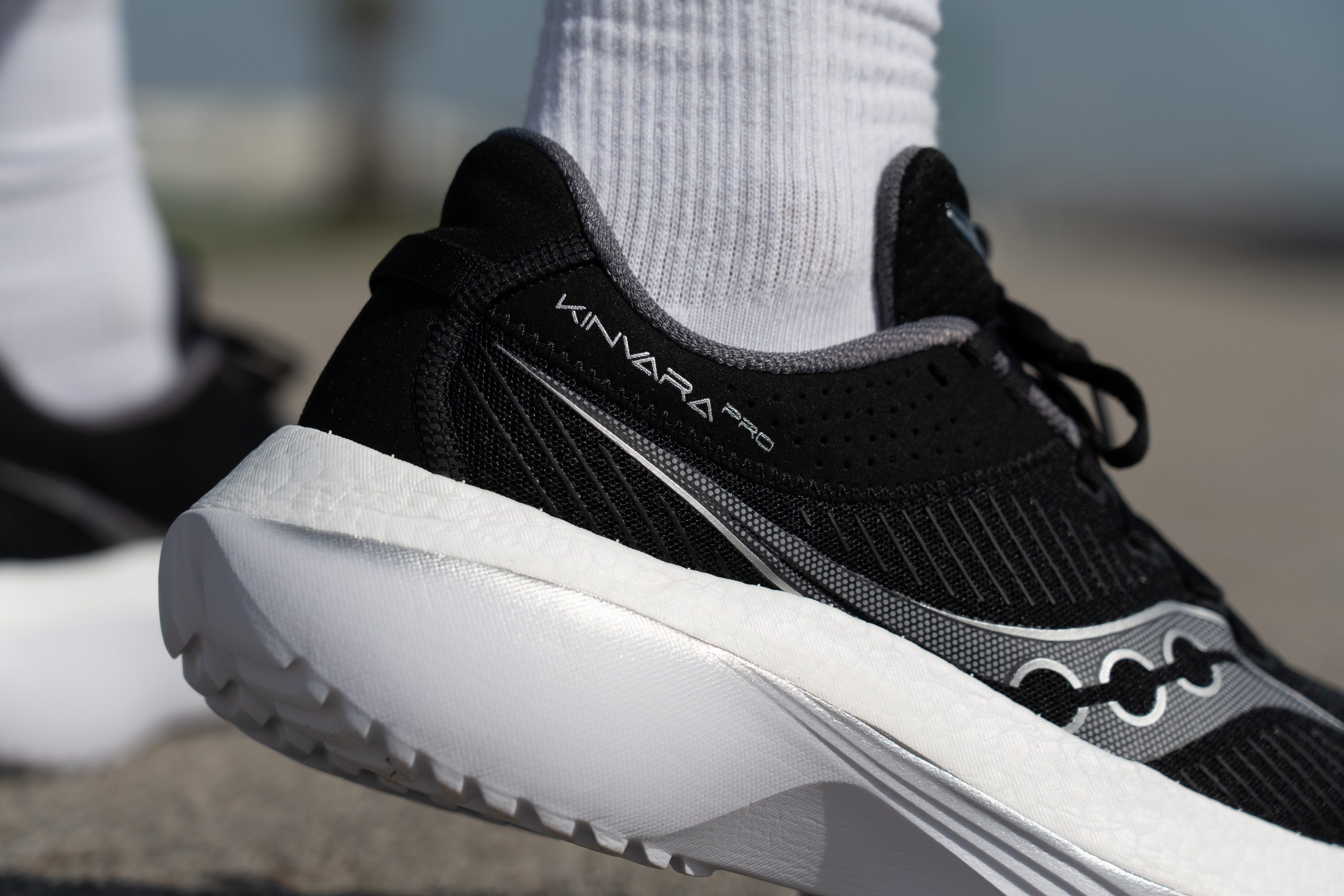
This bottom layer dulls the ride and slows the shoe down significantly. In our view, this is the Kinvara Pro’s core drawback, making it a less dynamic and less exciting choice than other max-cushioned supertrainers.
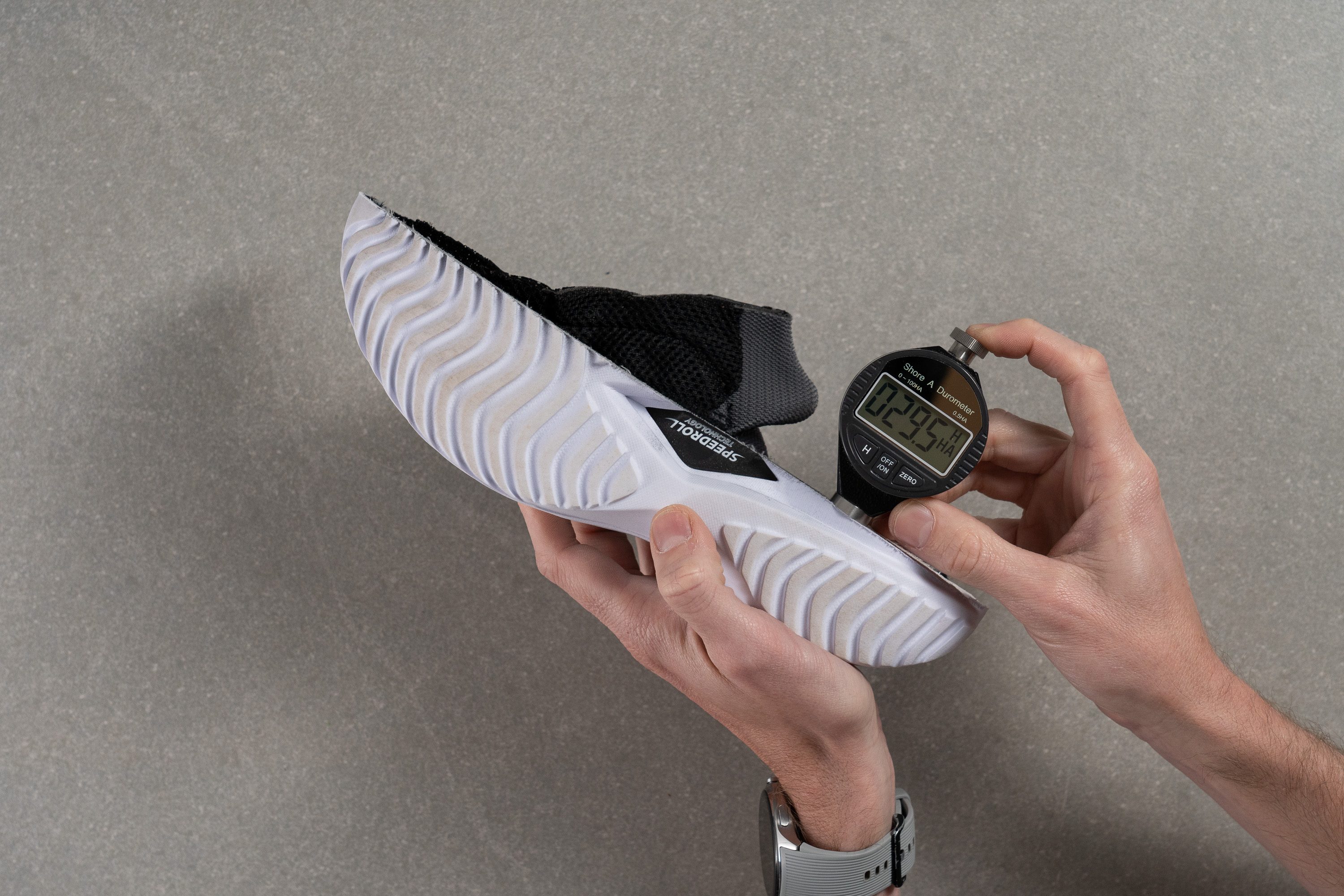
| Kinvara Pro | 29.5 HA |
| Media | 22.6 HA |
Rocker
The Kinvara Pro features a rocker that kicks in quite late but then rises sharply to ease transitions, something especially helpful with such a sky-high stack.
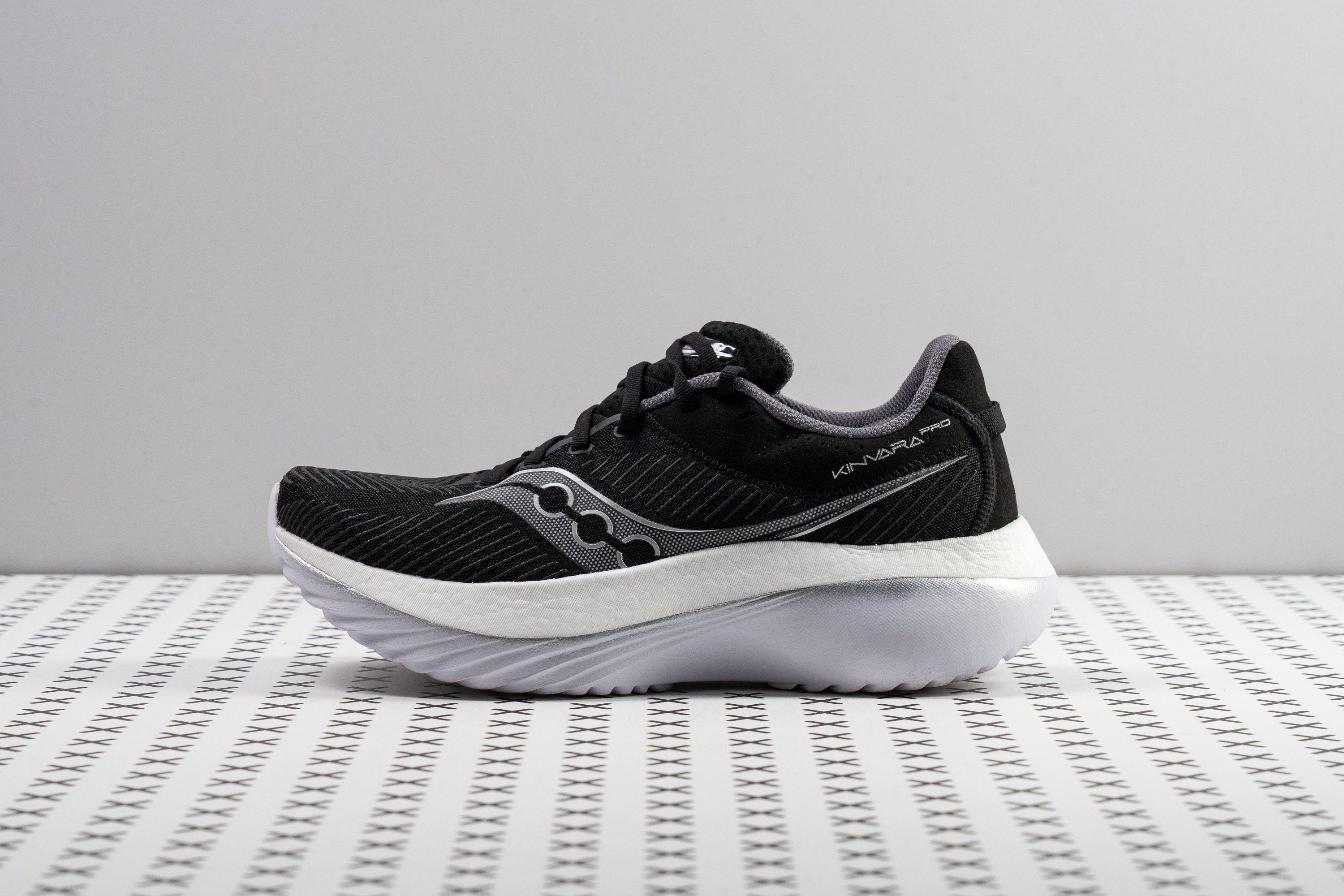
It’s essentially the reverse of the New Balance Fresh Foam X Balos, which is a shoe with a flowing, continuous rocker that delivers a smoother ride underfoot.
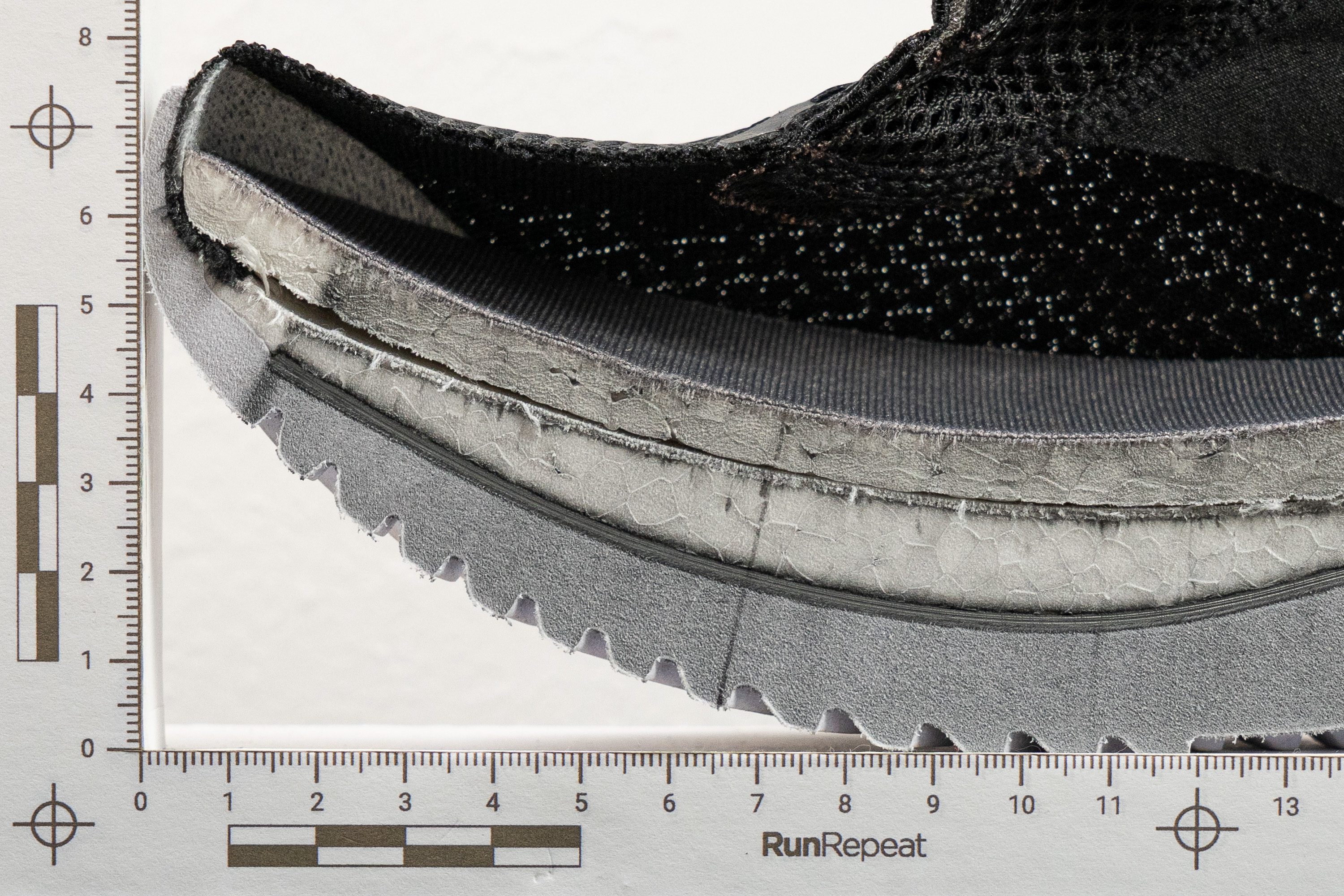
Plate
Like most supertrainers, the Kinvara Pro features a carbon plate placed between two layers of foam—but rather than going full length, it stops at three-quarters.
We believe that Saucony aimed to soften heel landings with this setup, though it can create a slightly sink-in sensation for extreme rearfoot strikers, who might feel that the shoe struggles to roll forward with enough fluidity despite being part of the Speedroll series.
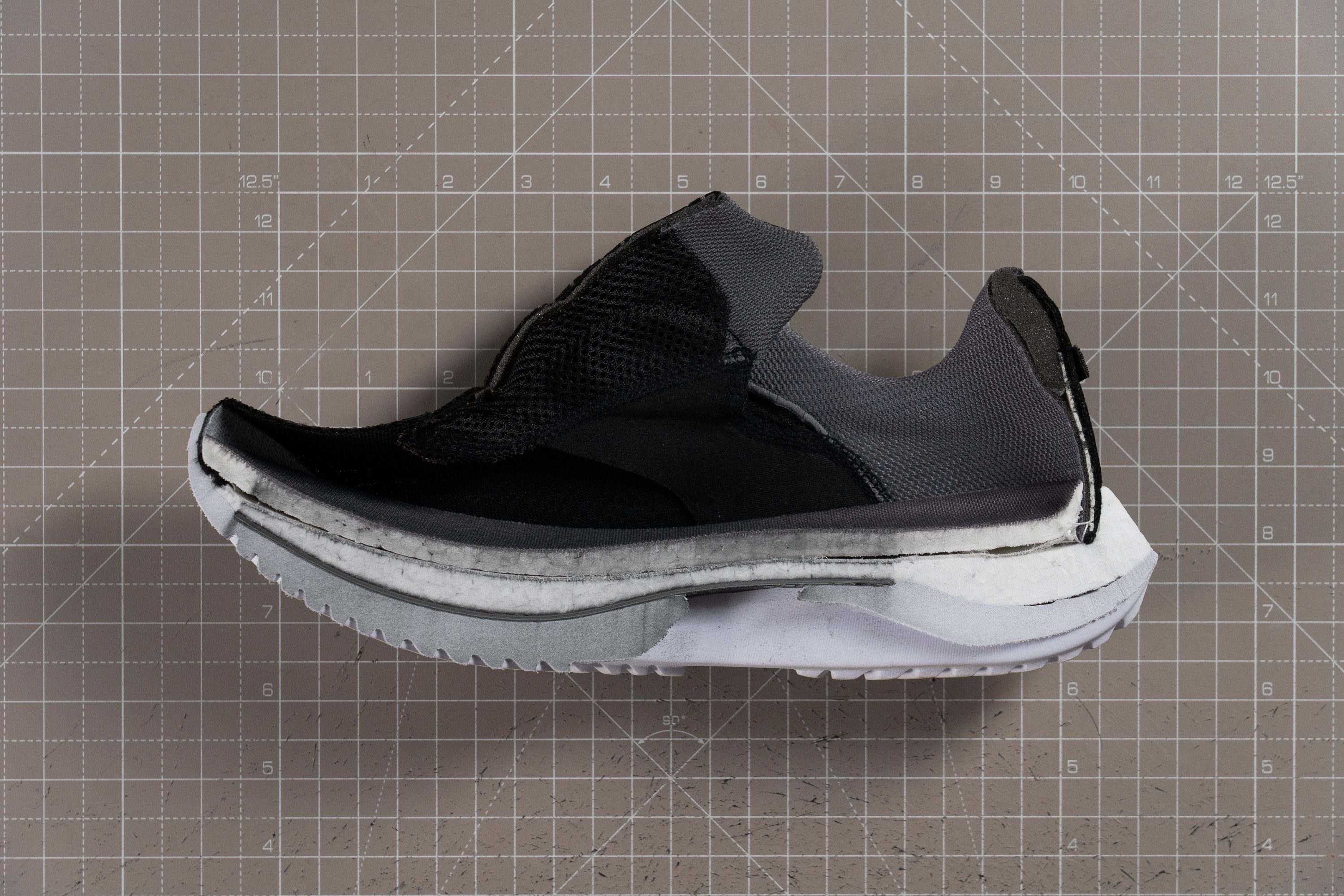
Tallaje y ajuste
Talla
Las Saucony Kinvara Pro tallan bien (17 votos).
Anchura / Ajuste
From the moment we slipped into the Kinvara Pro, we noticed a tight fit that didn’t quite match the comfort we expected from a supertrainer. In our view, this snug design felt overly restrictive for long runs.
The first measurement came in at 93.5 mm—already below average—but that number alone doesn’t capture the true sensation we experienced during our tests. So... let's keep going!
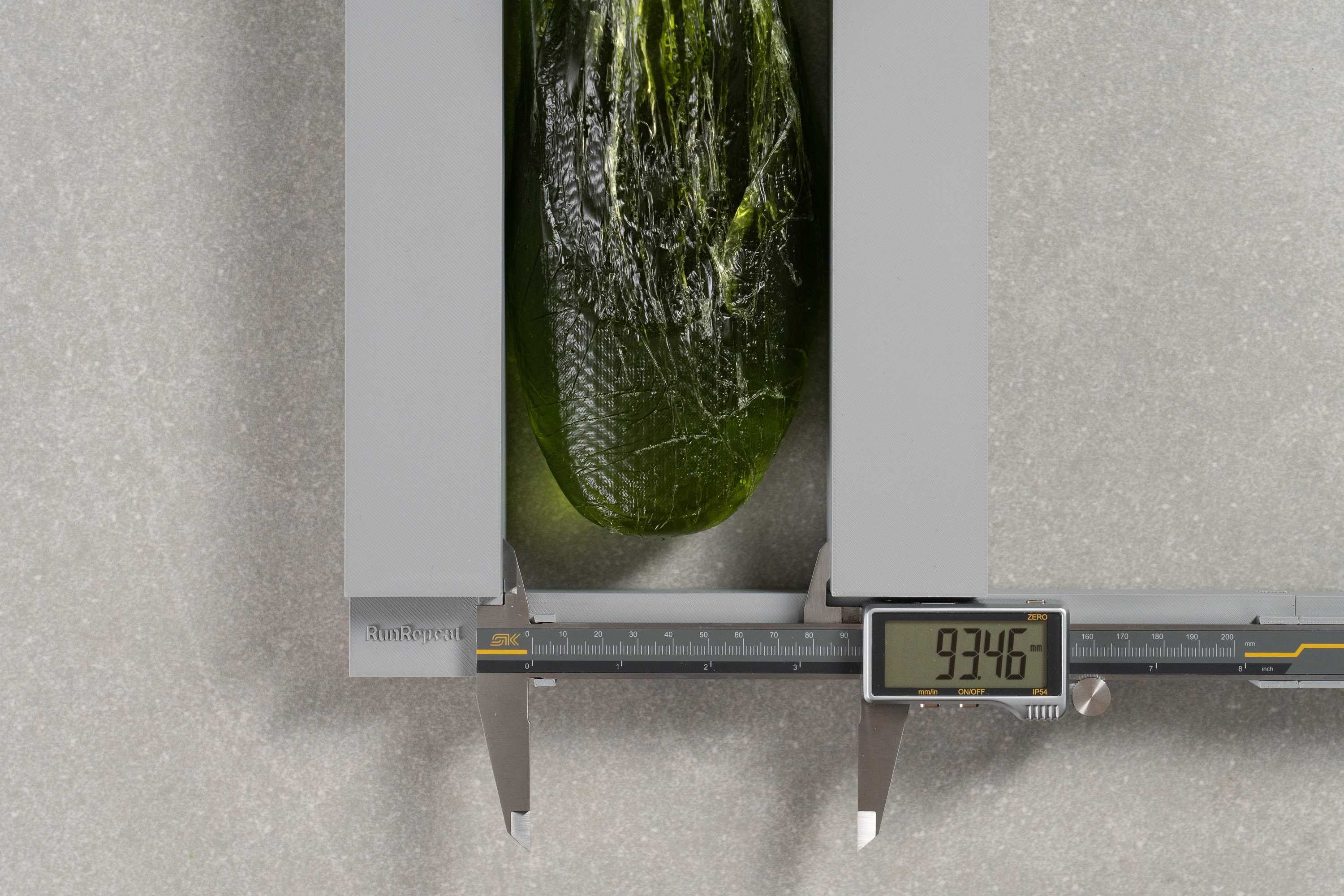
| Kinvara Pro | 93.5 mm |
| Media | 95.1 mm |
Anchura de la parte delantera
Our second measurement plays a key role in understanding the shoe's internal space, since overly tapered toeboxes often cut comfort short.
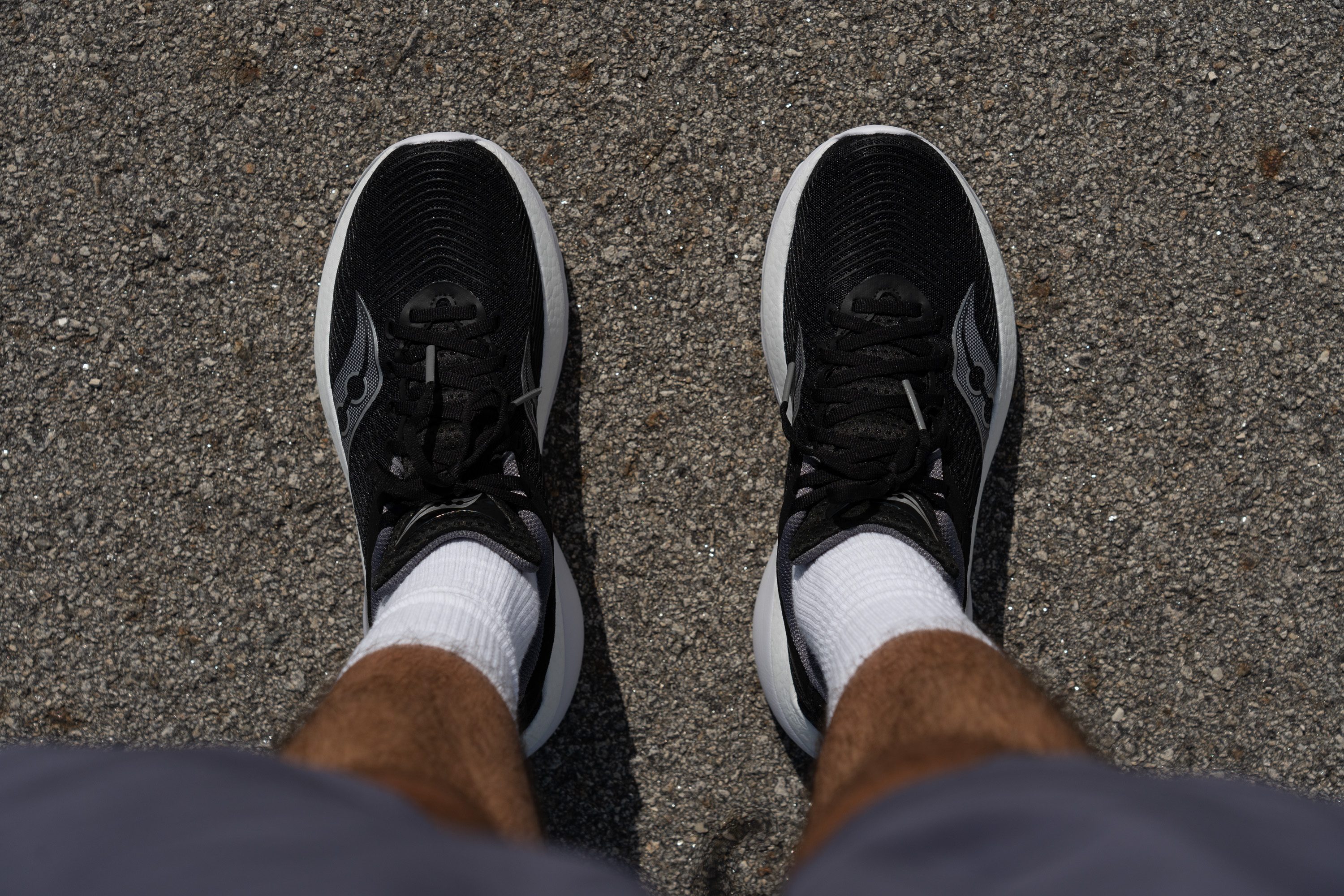
That seems to be the case with the Kinvara Pro. We measured just 69.3 mm in the big toe zone—a narrow, pointy design that severely limits natural toe splay. In our view, this design isn’t ideal for anyone aiming at long but comfortable miles, though it's a relief that Saucony offers this shoe in wide size in select markets.
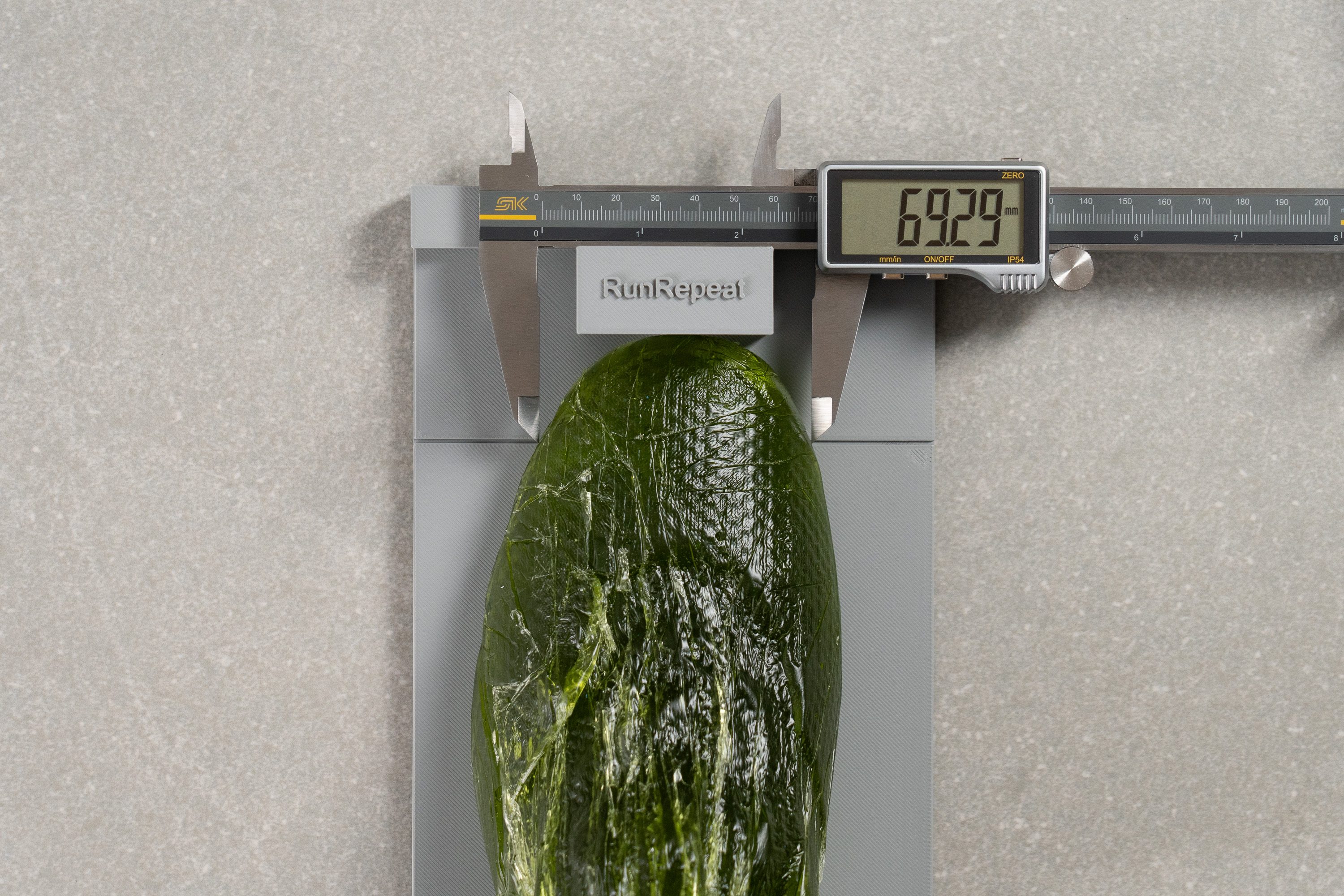
| Kinvara Pro | 69.3 mm |
| Media | 73.3 mm |
Altura de la parte delantera
Saucony didn’t give much horizontal space, but there’s enough vertical room for the toes.
It’s a setup that adds welcome comfort for longer efforts or warm-weather runs.
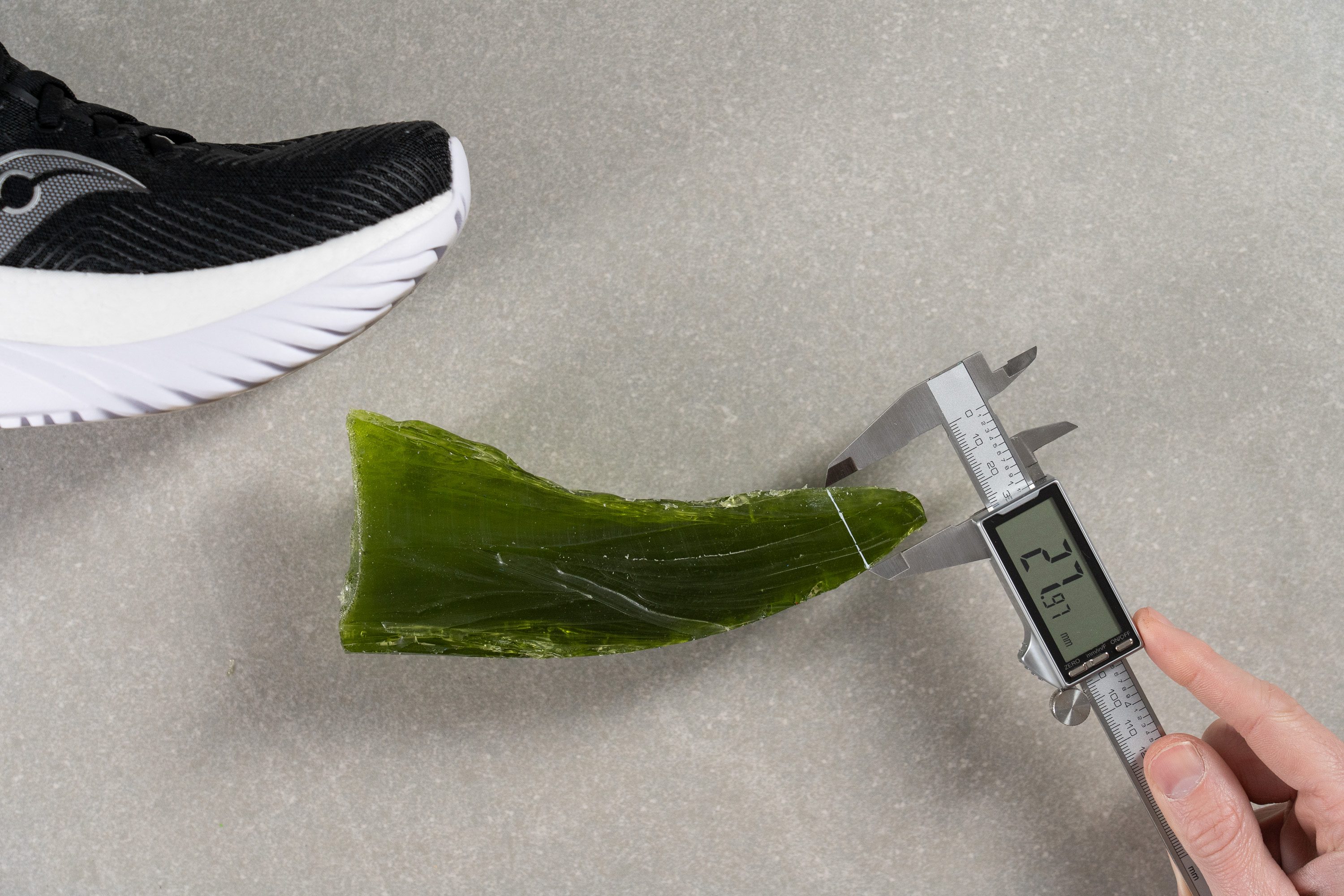
| Kinvara Pro | 28.0 mm |
| Media | 27.0 mm |
Tracción / Agarre
Traction test
The Kinvara Pro seems made to split opinions, but when it comes to traction, we found a more neutral ground. We tested it in the lab and recorded a 0.51 score—enough to deliver reliable grip in all conditions.
While it may not reach the grip-loaded tier of supertrainers, for daily runs and tempo workouts, theis outsole brings just the right mix of grip and smooth handling.
| Kinvara Pro | 0.51 |
| Media | 0.48 |
Diseño de la suela exterior
The outsole of the Kinvara Pro skips traditional rubber completely, using reinforced foam to deliver softer landings—though this may concern runners looking for long-term durability. Deep grooves in the forefoot and heel enhance both traction and flexibility.
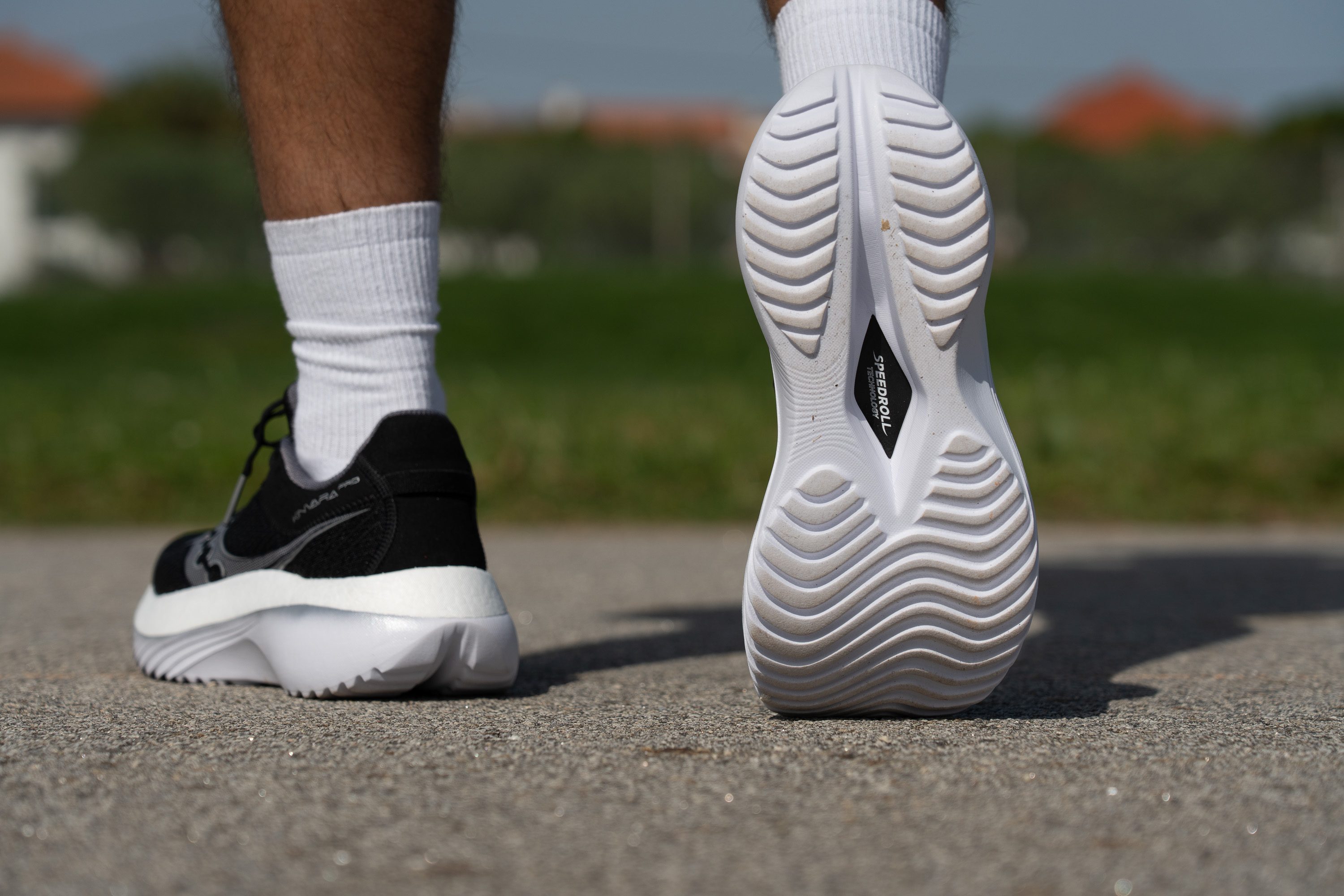
Flexibilidad / Rigidez
This shoe is extremely tough to bend from any angle. In our longitudinal stiffness test, it reached 26.4N—surpassing many supershoes. That’s how we discovered Saucony skipped a training-friendly plate in favor of something stiffer.
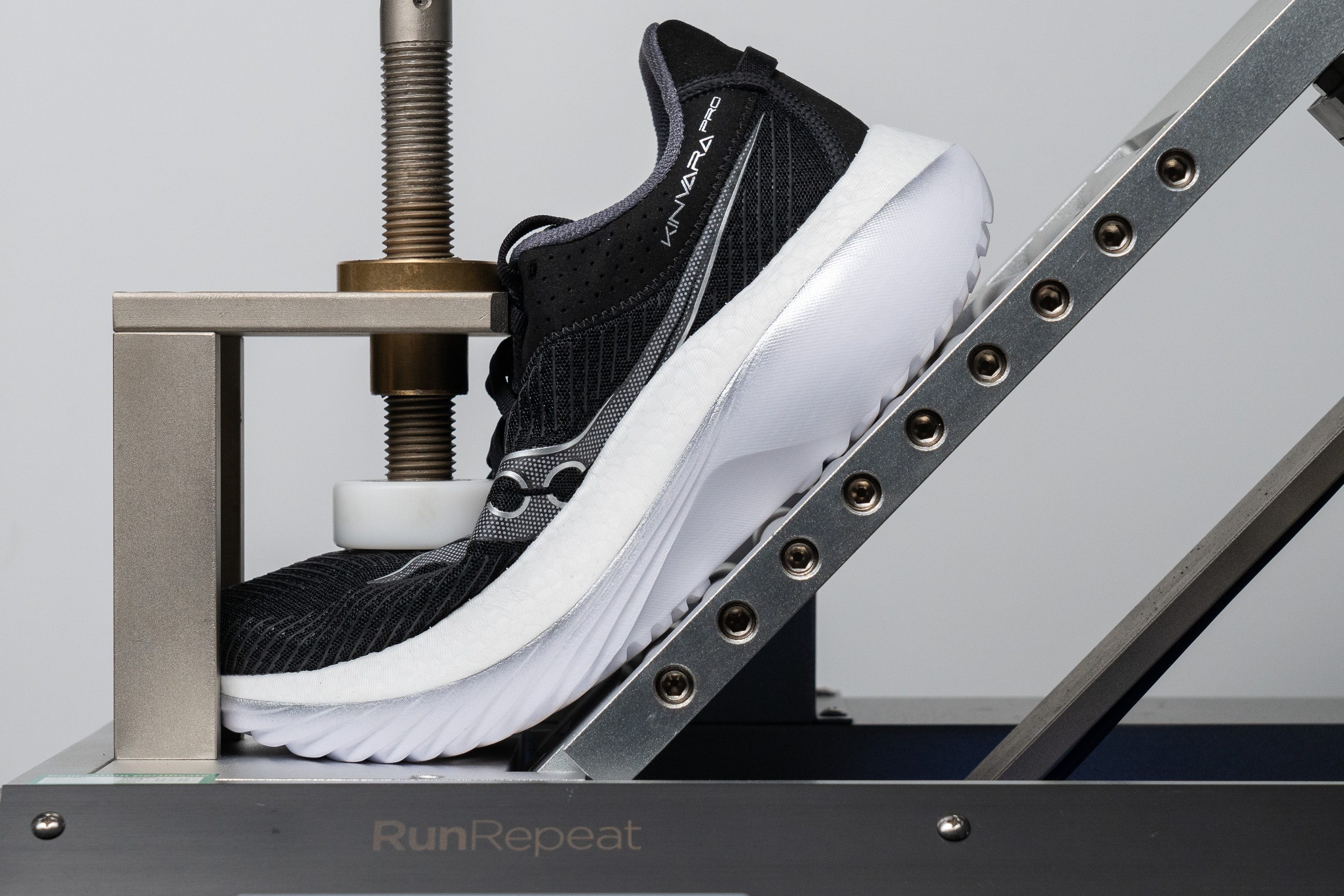
| Kinvara Pro | 26.4N |
| Media | 15.3N |
Peso
The size of this shoe suggests a high weight, and it does feel slightly heavy while running.
But when we placed it on our scale, we measured 9.9 oz or 281g—a surprisingly reasonable result for such a max-cushioned build. Considering it uses a layer of EVA instead of being full PEBA, that’s actually quite impressive. But on the other hand, it's heavier than most supertrainers.
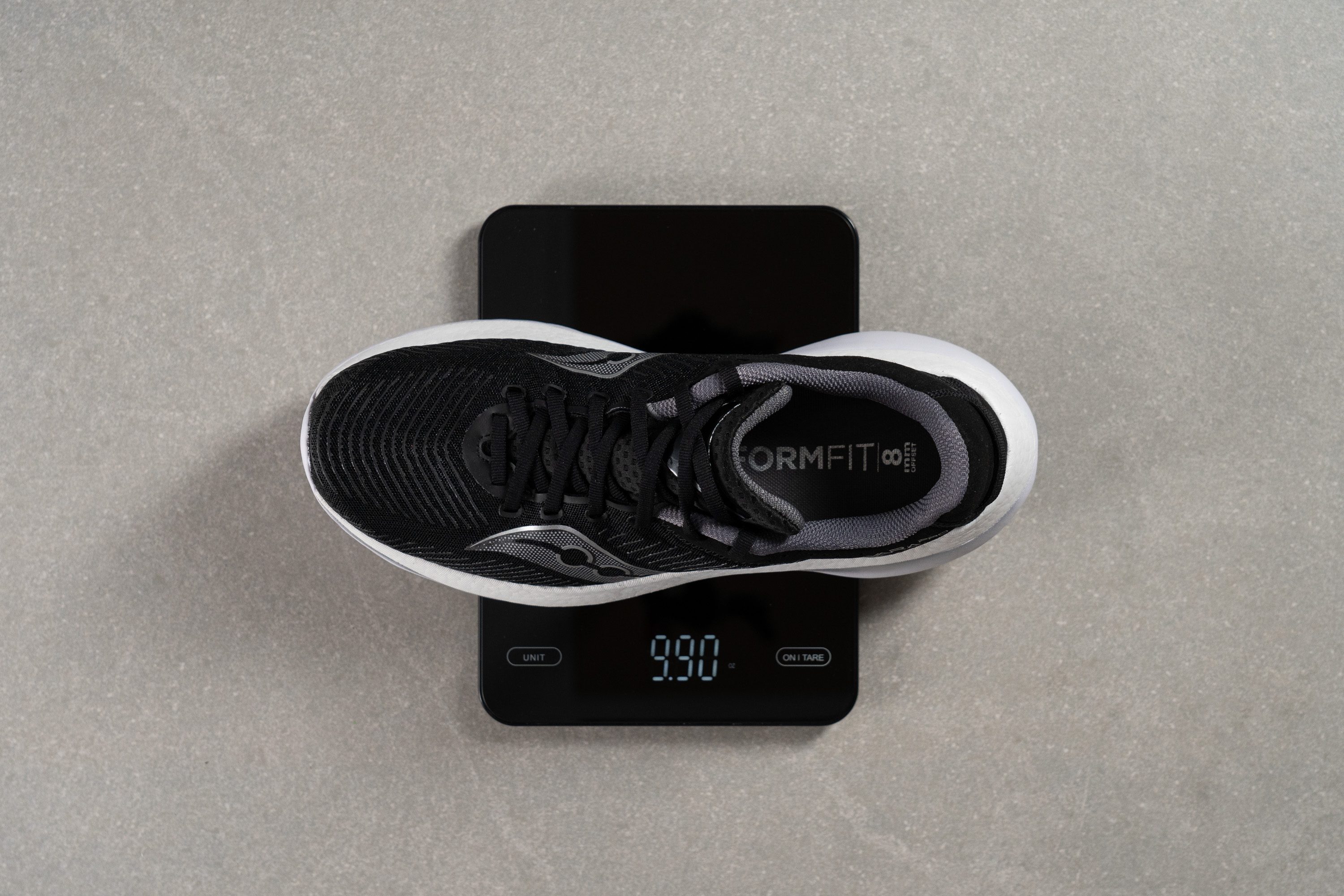
| Kinvara Pro | 9.9 oz (281g) |
| Media | 9.3 oz (264g) |
Transpirabilidad
The Kinvara Pro features an engineered mesh upper that feels good in quality, though maybe we expected something fancier given its high price tag.
When we put it to the test with our smoke machine, the ventilation didn't quite live up to our expectations, earning a 2/5.
Shining a light through the upper revealed that not much light made it to the other side, confirming our concerns about limited airflow.
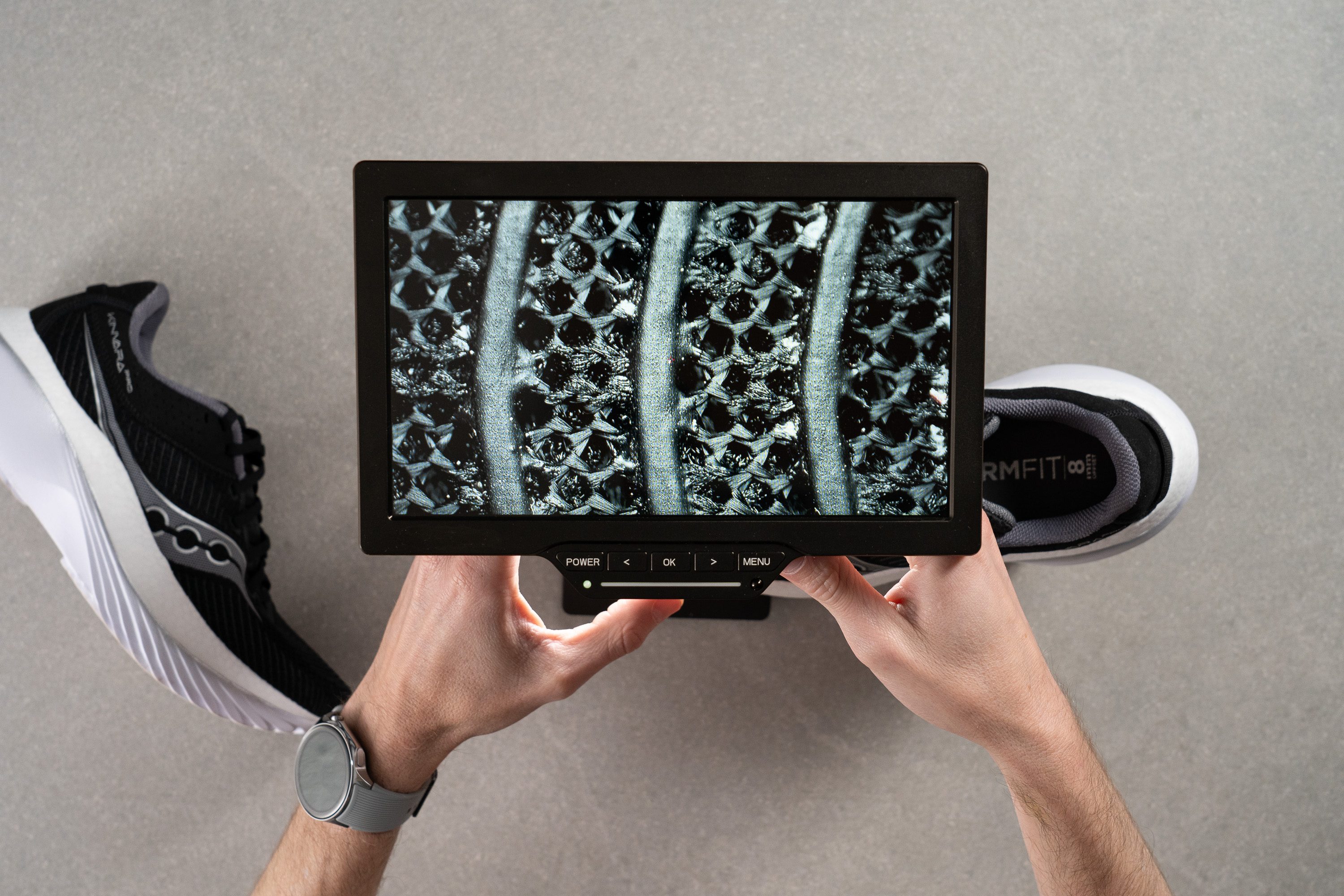
Using our microscope, we discovered a precisely engineered material, though the multi-layer structure definitely limits airflow.
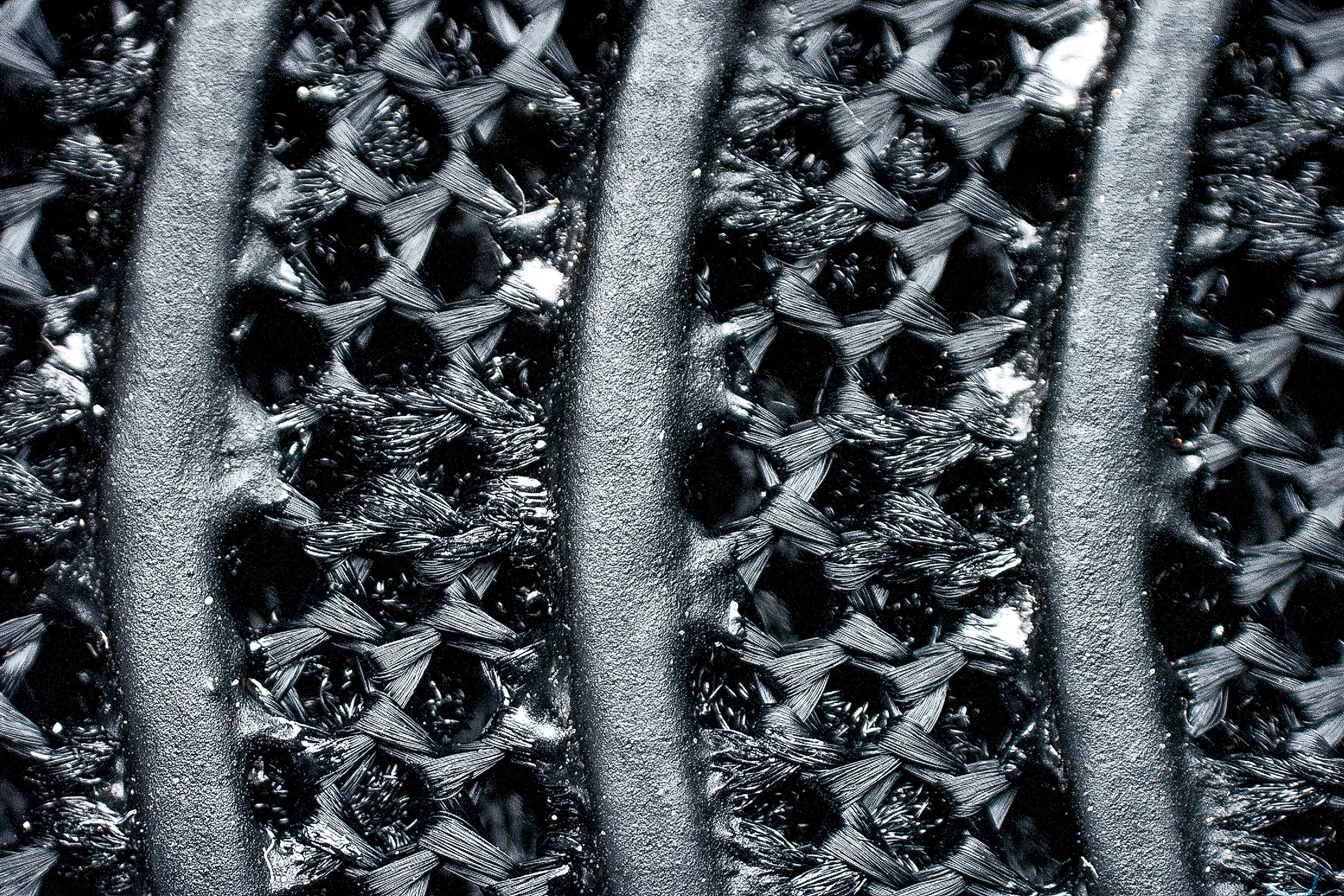
All in all, it's not a bad upper for those who don't run in hot climates, as it's comfortable and well-made. But if you plan to run somewhere hot, this is not a good pick at all.
| Kinvara Pro | 2 |
| Media | 3.7 |
Estabilidad
Prueba de estabilidad lateral
The lack of room in the toebox brings one clear upside—stability.
The Kinvara Pro’s ultra-wide midsole, combined with firm cushioning, a rigid carbon plate, and that race-like fit, delivers a super-stable ride even for mild pronators. The shoe looks like a Hummer SUV!
Rigidez torsional
With a carbon plate and an ultra-tall midsole, we had almost no doubt this shoe would register a 5/5 in our torsional test. And sure enough, it’s nearly impossible to twist... even for a strongman.
| Kinvara Pro | 5 |
| Media | 3.5 |
Rigidez del contrafuerte del talón
In our view, the heel counter feels much closer to what you’d find in an average daily trainer, which might seem odd at first. But with so many built-in stability elements, Saucony could afford a more comfort-oriented heel and we settled on a 3/5 score.
| Kinvara Pro | 3 |
| Media | 2.9 |
Anchura de la mediasuela - antepié
The main stability-boosting feature of this shoe is its oversized landing platform. Seriously, it’s gigantic—and we confirmed that in the lab, with our calipers measuring a huge 119.5 mm in the forefoot.
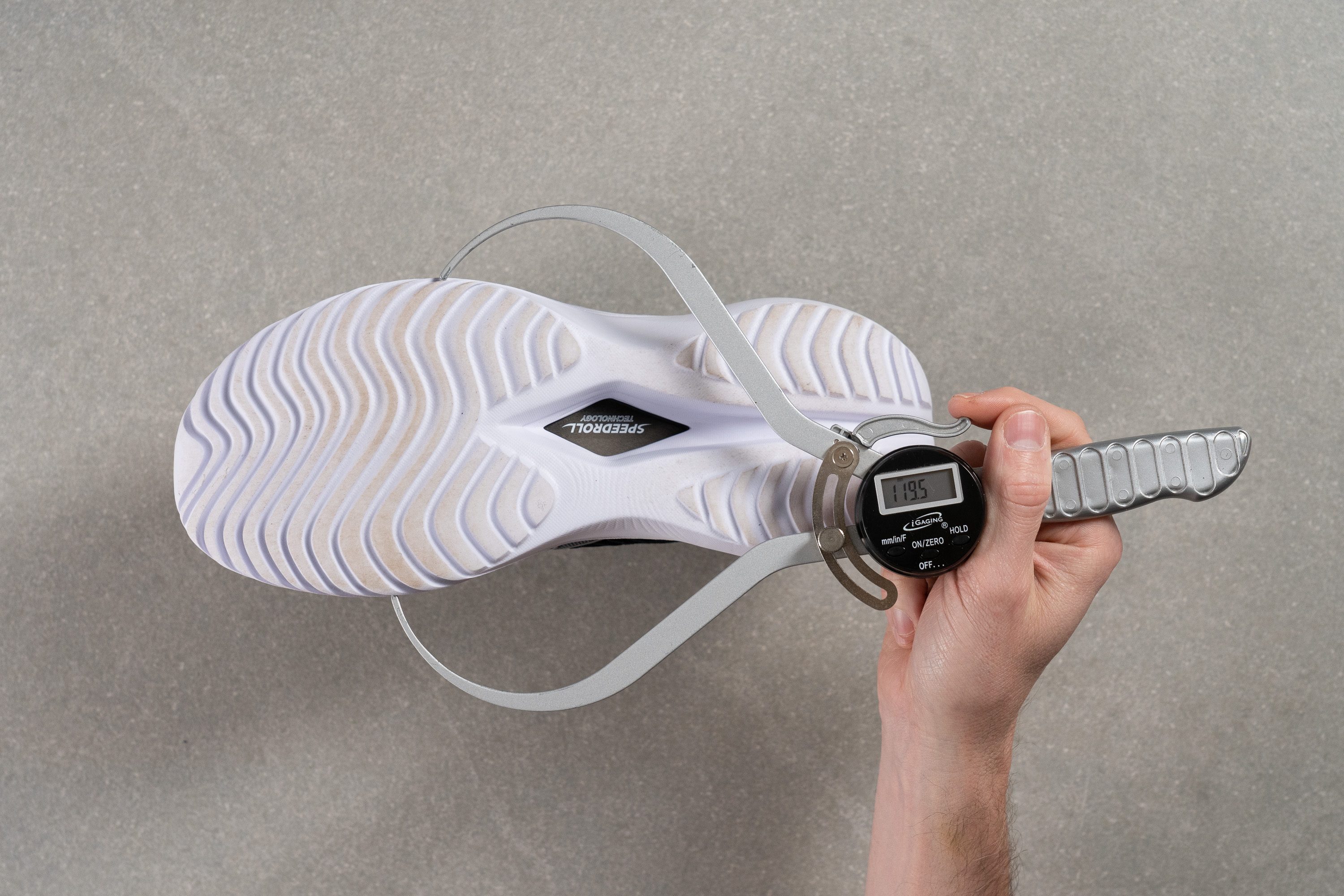
| Kinvara Pro | 119.5 mm |
| Media | 114.3 mm |
Anchura de la mediasuela - talón
The heel stands out even more at 99.5 mm, making the Kinvara Pro one of the widest shoes we've tested. It’s perfect for runners who enjoy a super-sized platform, though it comes with trade-offs especially in terms of agility.
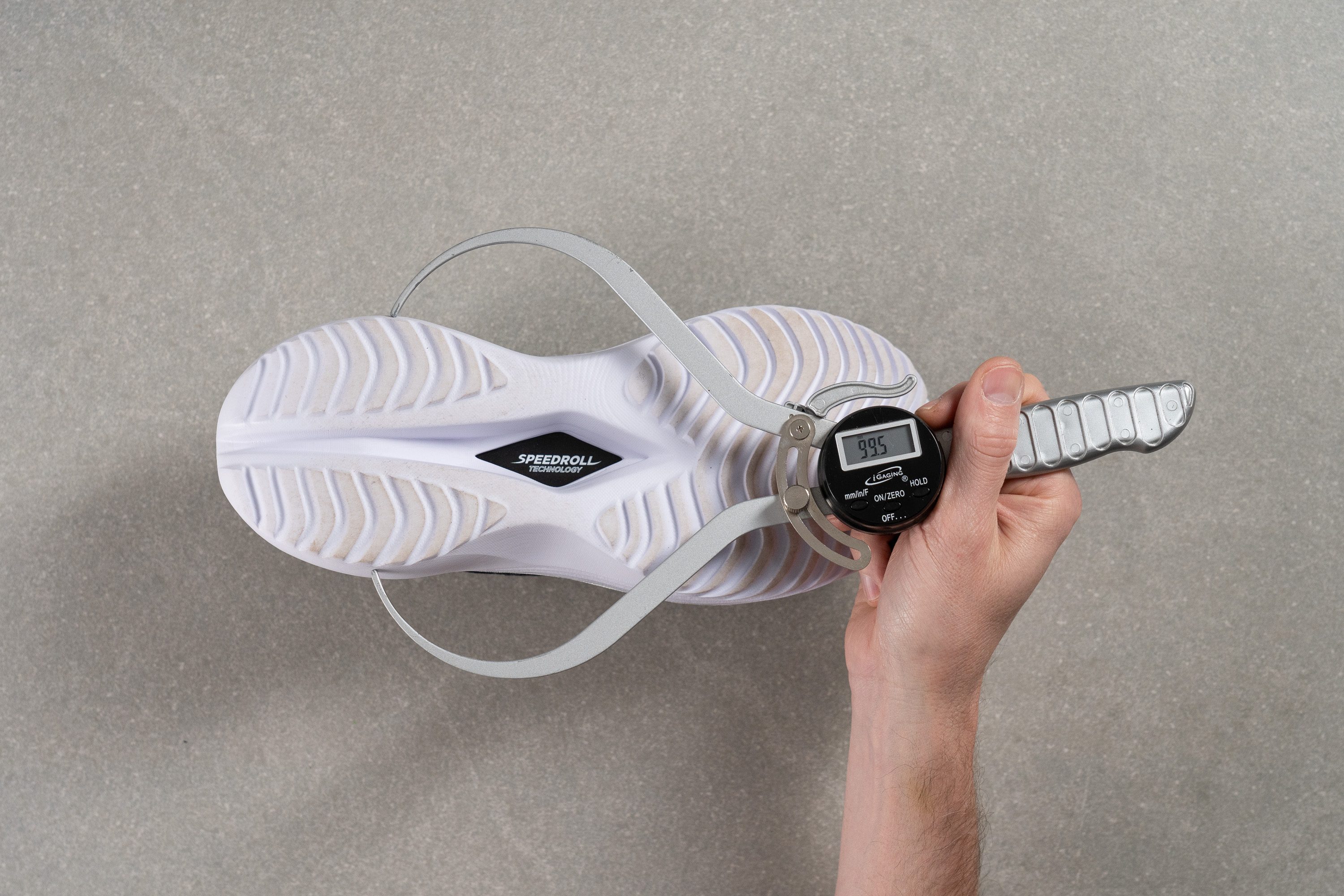
| Kinvara Pro | 99.5 mm |
| Media | 90.7 mm |
Durabilidad
Durabilidad de la parte delantera
It’s definitely not a lightweight upper, but at least it brings something valuable to the table: durability. We tested it with our Dremel and it held up surprisingly well, earning a solid 4/5.
| Kinvara Pro | 4 |
| Media | 2.6 |
Durabilidad del acolchado del talón
The heel padding outperformed the toebox (that wasn't easy!) and earned a well-deserved 5 out of 5 in our second Dremel test.
| Kinvara Pro | 5 |
| Media | 3.4 |
Durabilidad de la suela
Rubberized outsoles typically struggle with durability, but the Kinvara Pro genuinely surprised us. The Dremel left just 0.4 mm of damage—a standout result for anyone concerned about long-term wear.
| Kinvara Pro | 0.4 mm |
| Media | 1.1 mm |
Varios
Grosor de la plantilla
The insole stands out with a bold design choice—unlike the usual 4 or 5 mm slabs of plain EVA, Saucony opted for a 7.0 mm thick, ultra-cushioned layer of PWRRUN+, their TPU-based foam seen in best-sellers like the Saucony Ride 17.
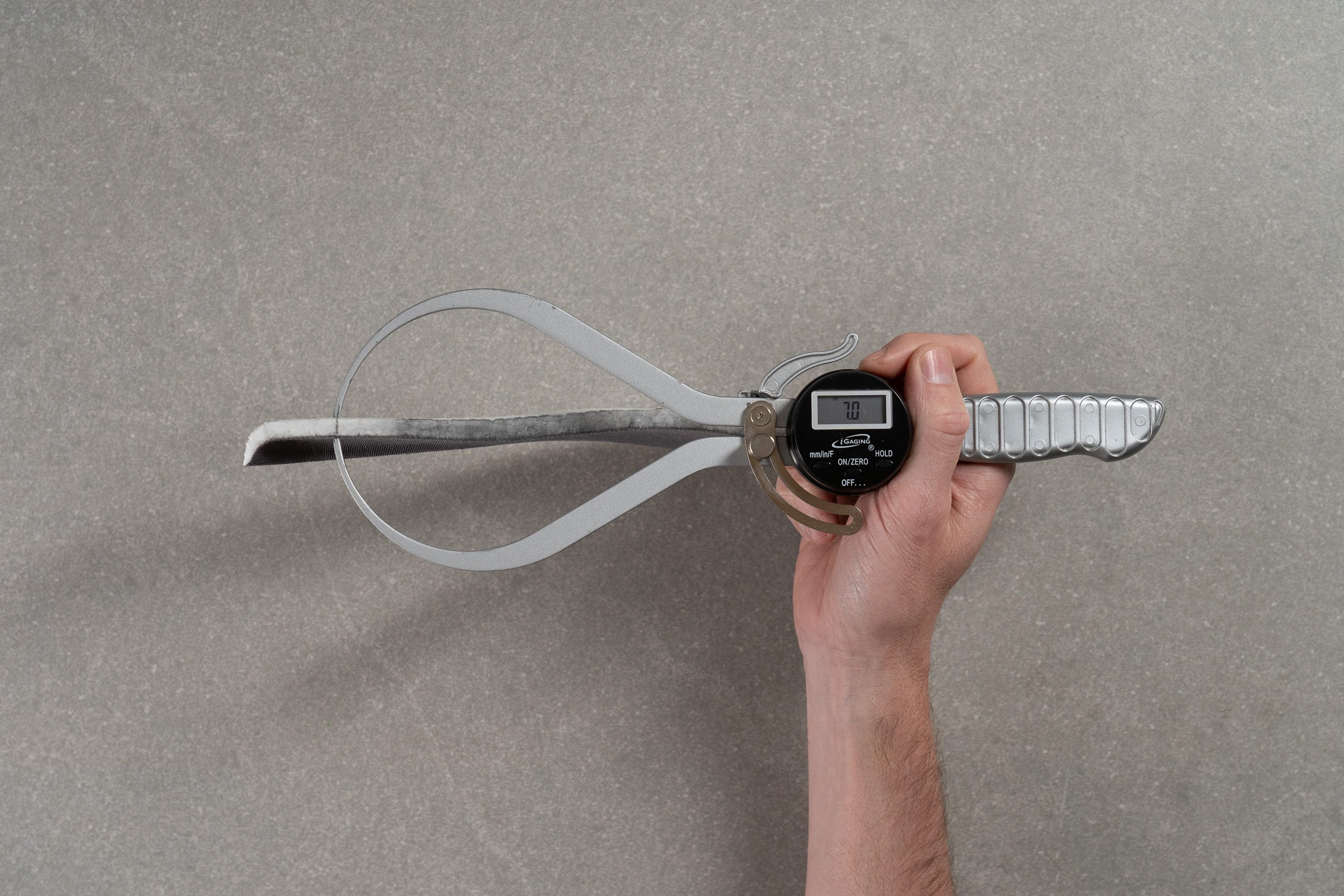
| Kinvara Pro | 7.0 mm |
| Media | 4.5 mm |
Plantilla extraíble
You can remove the thick PWRRUN+ insole from the Kinvara Pro, and that brings both benefits and tradeoffs. On one hand, it opens up the narrow toebox when swapped for a thinner option, which can improve fit. However, this bouncy insert plays a big role in the shoe’s DNA and contributes significantly to its cushioning.
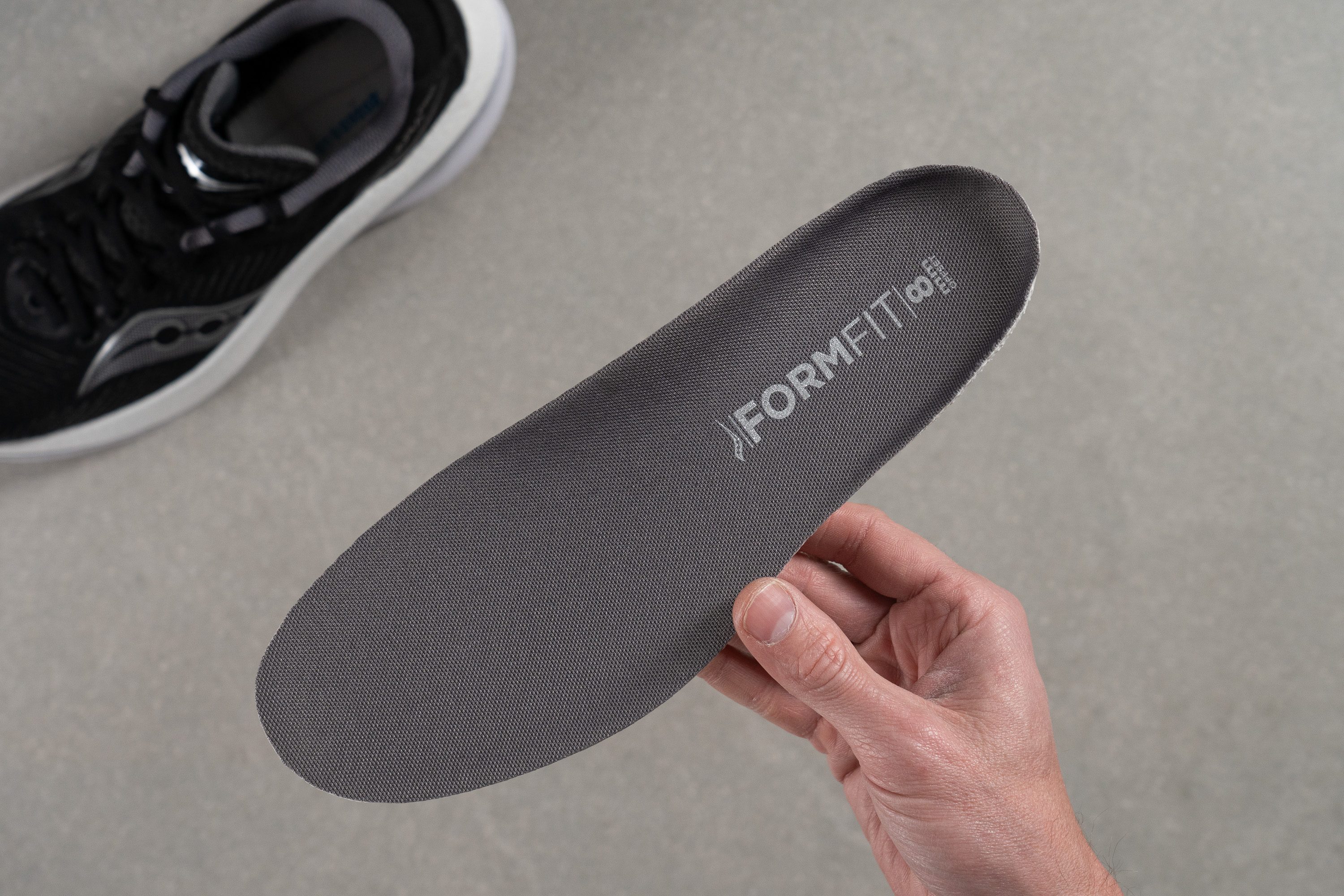
| Kinvara Pro | Sí |
Rigidez de la mediasuela en frío (%)
After 20 minutes in the freezer, the Kinvara Pro’s midsole changed by only 11%. That's a better-than-average outcome thanks to the PWRRUN PB (PEBA) foam.
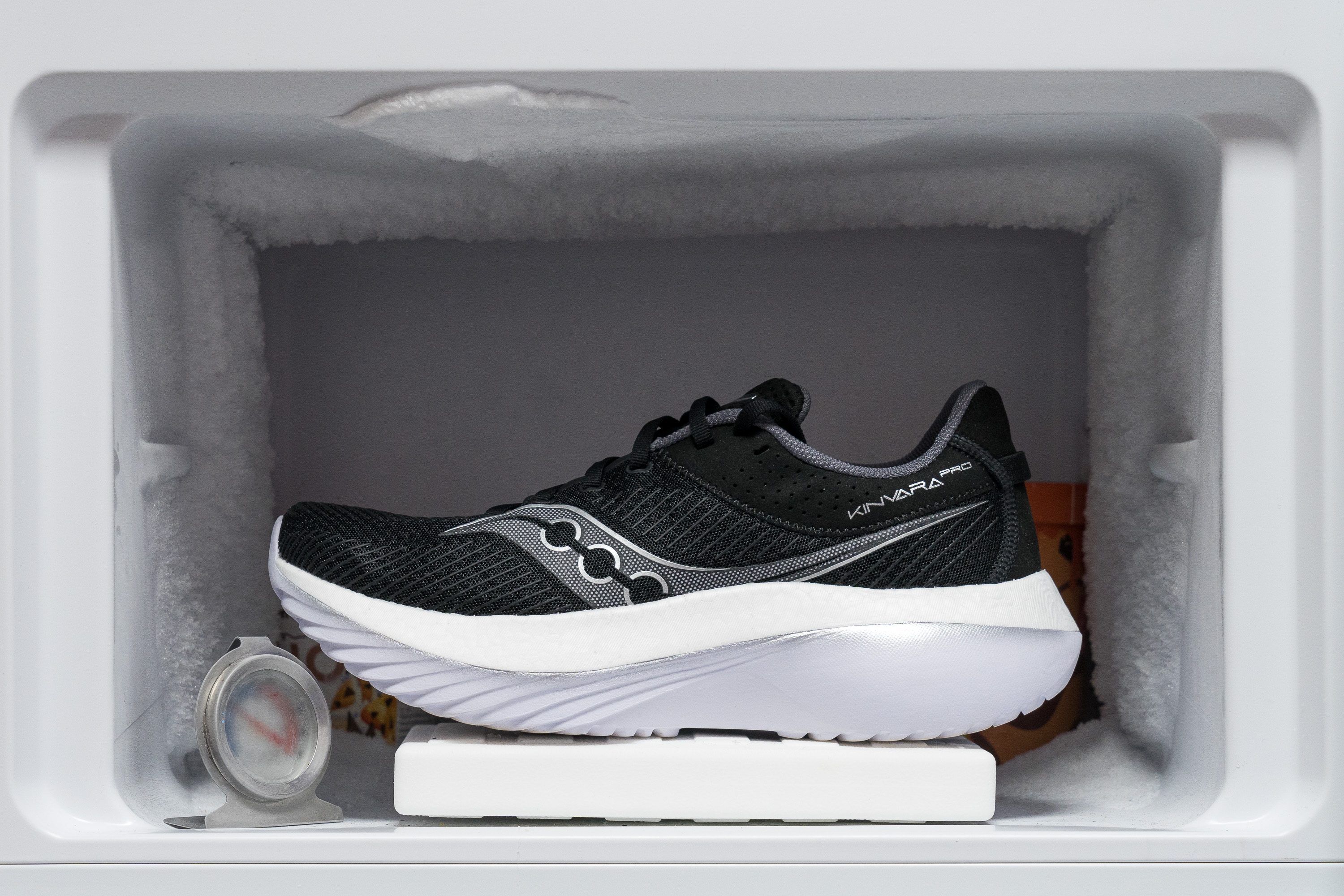
| Kinvara Pro | 11% |
| Media | 24% |
Elementos reflectantes
We were glad to spot a few subtle reflective details on the upper of the Kinvara Pro!
| Kinvara Pro | Sí |
Acolchado de la lengüeta
A supertrainer aims to blend the comfort of a daily trainer with the performance features of a race-day shoe—and the tongue usually plays a key role on the comfort side of this hybrid identity.
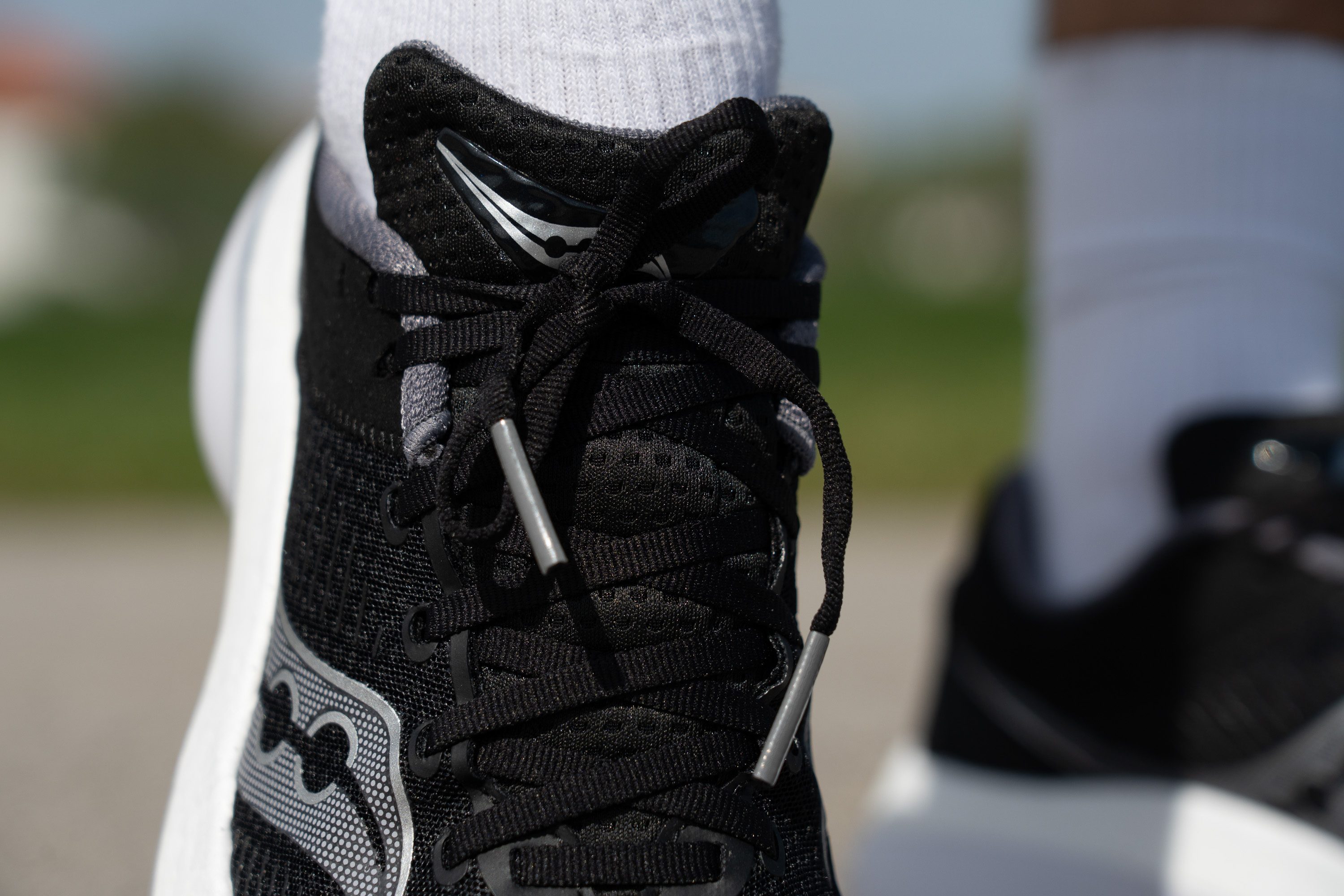
That’s the case with the Kinvara Pro, which comes with a generously-padded 5.2 mm tongue (for a speed-training or tempo shoe) that offers a secure feel while doing a great job protecting the instep.
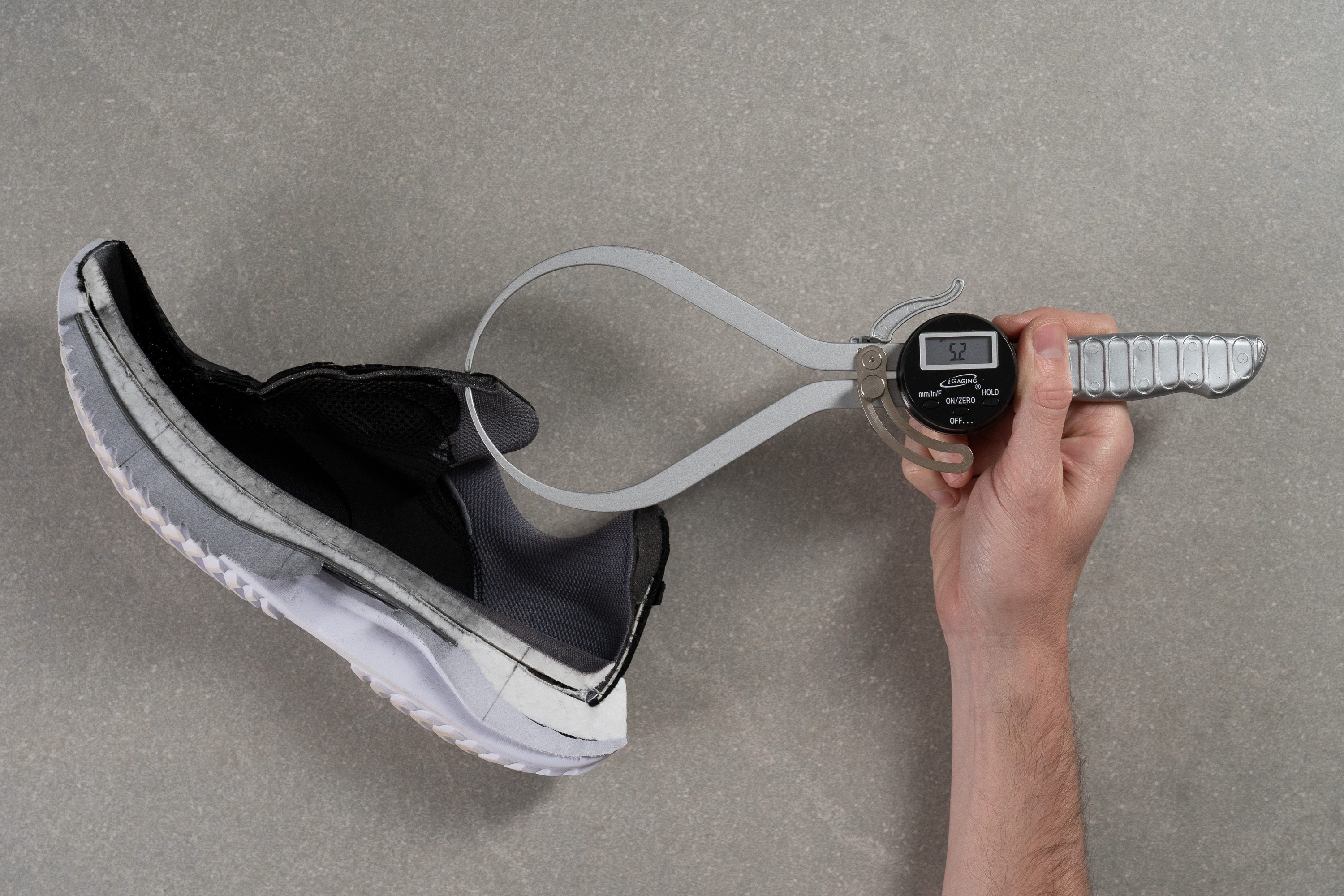
| Kinvara Pro | 5.2 mm |
| Media | 5.8 mm |
Lengüeta: tipo de refuerzo
The tongue is semi-gusseted, meaning it’s partially attached to the sides. That’s great for lockdown, offering a secure-and-snug fit. Yet, of course, that is exactly what you’d expect in a premium-priced shoe.

| Kinvara Pro | Ambos lados (semi) |
Precio
The Kinvara Pro is a tough sell for most runners outside of Saucony loyalists or those focused on stability. There are lighter, quicker, and more breathable options in the same price range—or even cheaper—so spending 200 bucks here feels hard to justify.
| Kinvara Pro | $180 |
Tirador del talón
The heel features a low-profile horizontal tab that blends seamlessly into the design—easy to overlook, but it adds a practical detail we really appreciated.
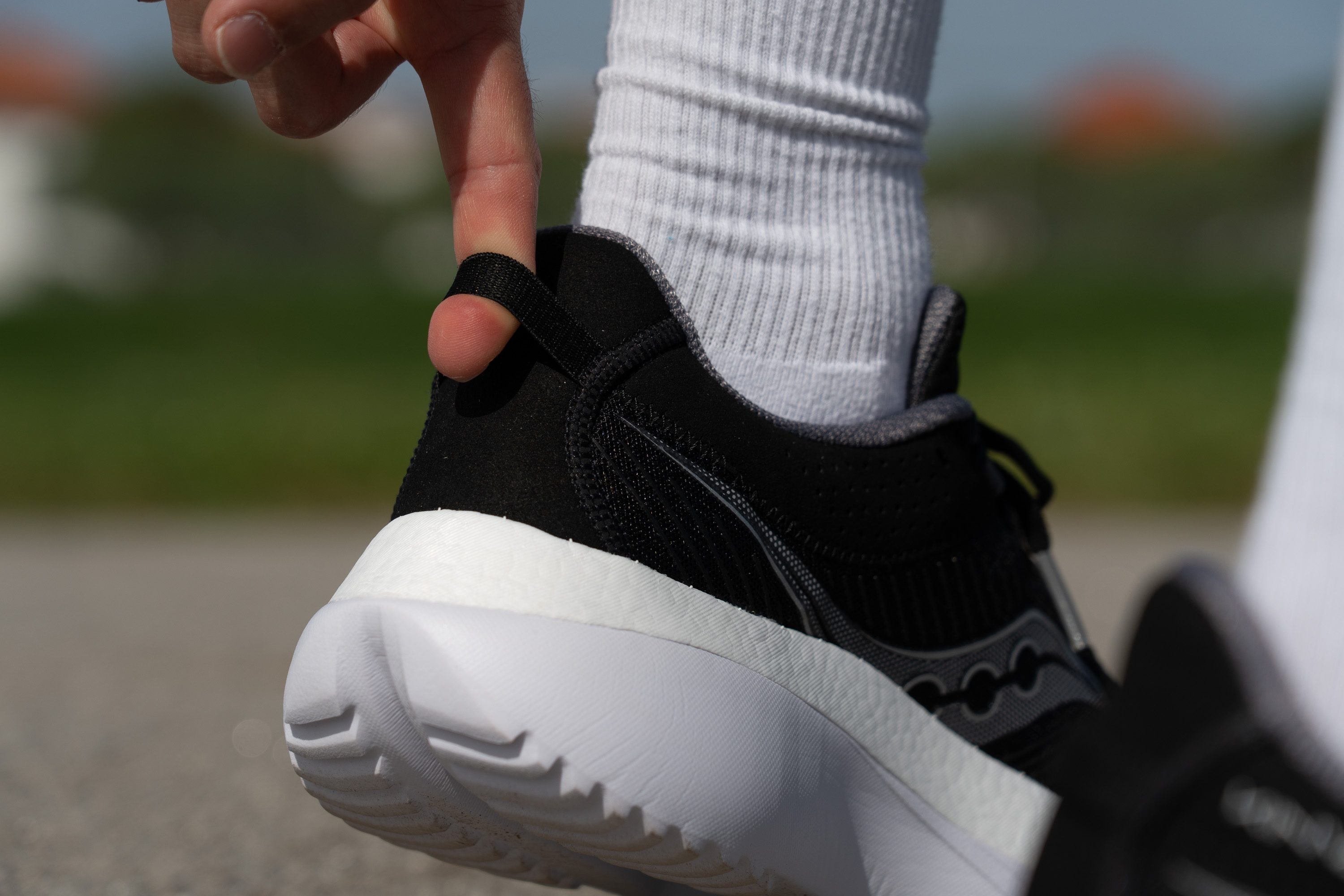
| Kinvara Pro | Tirador circular |

